There are stories from history that everyone thinks they know inside and out, but as these photos show there’s always more than one way to look at something or someone.
Just because the Queen of England looks stodgy right now doesn’t mean that she wasn’t playful in the 1950s, and even though we think of the Great Depression as being a real drag, there were people who knew how to pass the time in interesting ways.
Whether you’re curious about forgotten wars, abandoned buildings, or animals from the late 19th century, we’ve got something here for you. Relax and get ready to learn about forgotten pieces of history, read on!
Prince Charles watches as Queen Elizabeth helps Princess Anne climb back up a window at Balmoral Castle, Scotland. (1952)
Balmoral Castle in Scotland is the home away from home for the British Royal Family. in fact, they’ve been going to the castle for decades for rest and relaxation, usually during the summer. The Queen has been visiting Balmoral in the summer since she was a child, but most of the folks in her kingdom became aware of the family’s trips in the 1950s.


During that time the Queen, King George VI, Prince Philip and Princess Margaret would head out to the countryside for picnics and playtime. The Queen even brought her royal corgis to the countryside with her! It looks like Charles and Anne got up to plenty of trouble while they were in the Scottish countryside, but what else are you supposed to do on vacation?
An Inuit man warms up his wife’s feet in Greenland, 1890s. (photo by Robert E. Peary)
The Inuits have been living in Greenland and near the Arctic Circle for generations longer than anyone else who’s spent time in these frosty areas - so if they’re cold then you know you’d be freezing. The Inuit people stretch across the north, from Greenland to Canada, and during the 19th century they were somewhat nomadic.
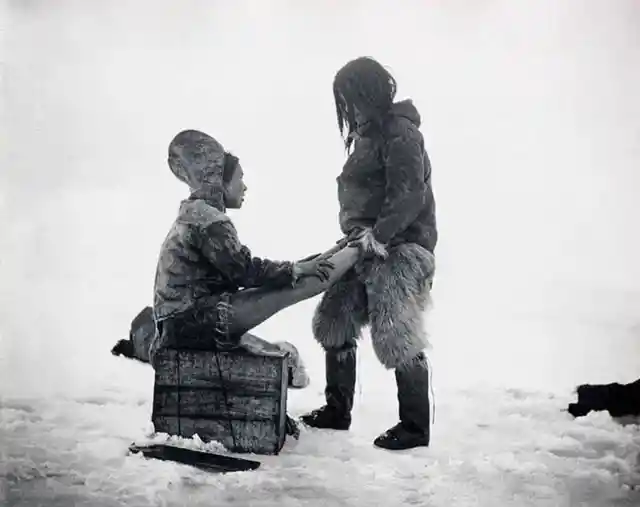
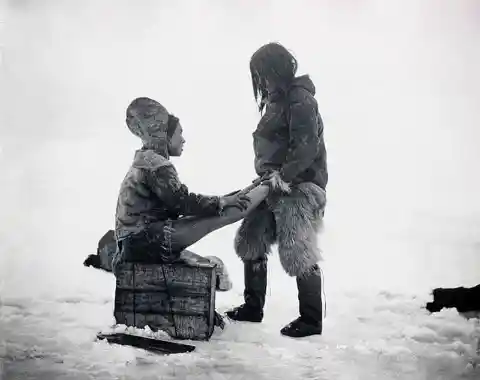
In the 1850s the Inuit were hired by whalers from Britain and New England to help with the large-scale operations that were staring up in the 19th century. This pic was likely captured on a break from a hard day’s work. Where do you think we can get one of those hats?
A 70 year-old Elizabeth Arnold, believed to be England's only female blacksmith, shoes a horse outside of a 400 year-old forge in Kent. (1938)
Even though she was only a reported 5ft tall, Elizabeth Arnold was a darn good blacksmith who was thought to be the only female blacksmith in England in the early 20th century. She was still working when she was 70 years old and was said to have been able to swing a 10lb sledgehammer like no one’s business.

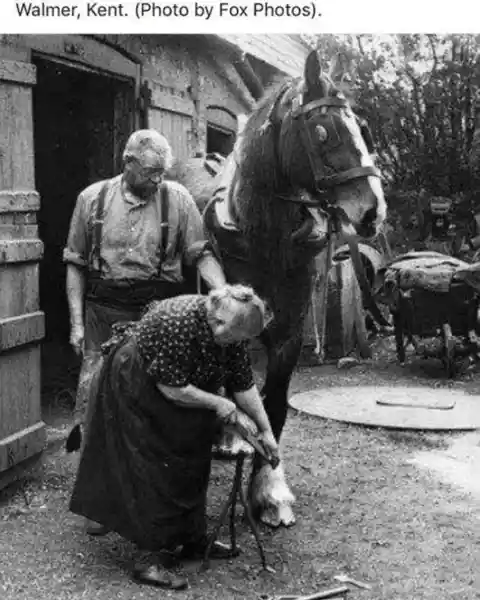
She lived outside of Kent, which is spot that’s known for its horses. It’s likely that she was up to her elbows in work, and as the only female blacksmith she must have been quite a novelty for the people in the surrounding area.
Congrats go out to this 50 year-old man with Down Syndrome who recently retired after working 32 years at McDonalds.
In 2018, after working at the Northmead McDonalds in west Sydney Australia Russell O'Grady retired following 32 years of work in the service industry. O’Grady began working at the McDonalds in 1986 at the age of 18 and he immediately became the lynchpin of the team.
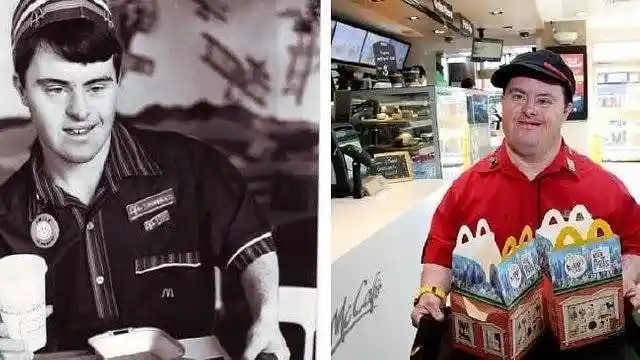
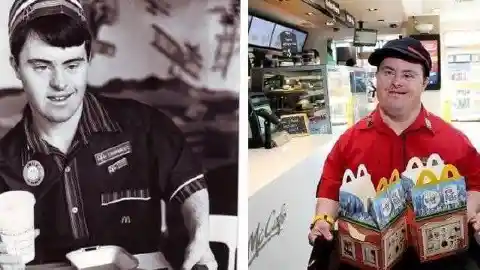
Just before his retirement from McDonalds O’Grady’s brother had this to say about his retirement:
According a spokesperson for the local McDonalds, there are a lot of people who stop by just to see O’Grady.
Faris Tuohy, who fought in WWII, is holding a photo from 1944. That’s him on the left, holding a cup of coffee, after one of many hellacious battles. He will be 95 this April.
What a photo to have. Faris Tuohy is certainly lucky to still be here, especially after the battles he’s been through. During World War II, Tuohy fought with the 3rd Battalion, independent 22nd Marine Regiment. On this day he’d just finished a two day battle for Engebi in Eniwetok Atoll where they went toe to toe with Japanese soldiers.
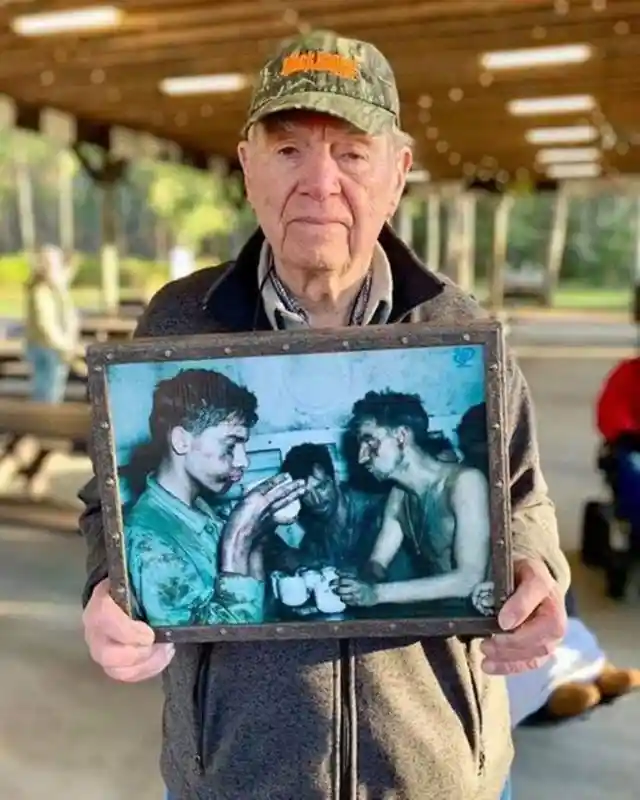
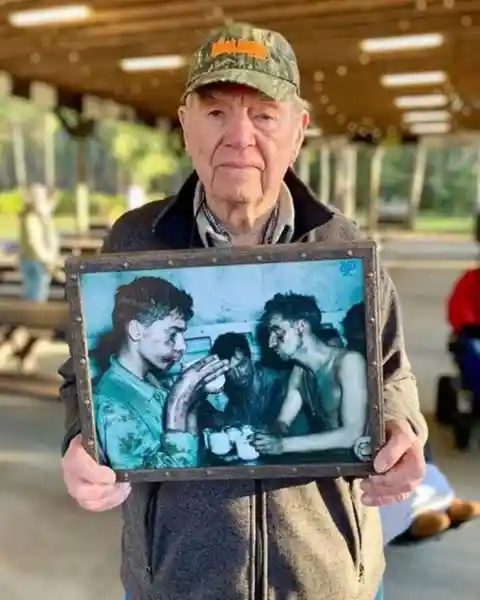
During the battle Tuohy’s battalion killed 736 Japanese soldiers, and reportedly only 19 of the soldiers surrendered. The photo that Tuohy is holding is one of the few that the U.S. allowed to be released in America, and it shows the intense scars of war.
In 1931, Mary Smith earned six pence a week in east London by shooting a pea into the windows of the sleeping workers. Knocker-uppers also used long bamboo sticks, batons and canes to rouse residents of the upper floors.
How much would you pay someone to wake up in the morning? Beginning in the 18th century and stretching all the way to the early 20th century, workers paid human alarm clocks to wake them up in various ways. Mary Smith made her bones shooting peas into the windows of workers, and people called knocker uppers would literally bang on the windows of their clients.
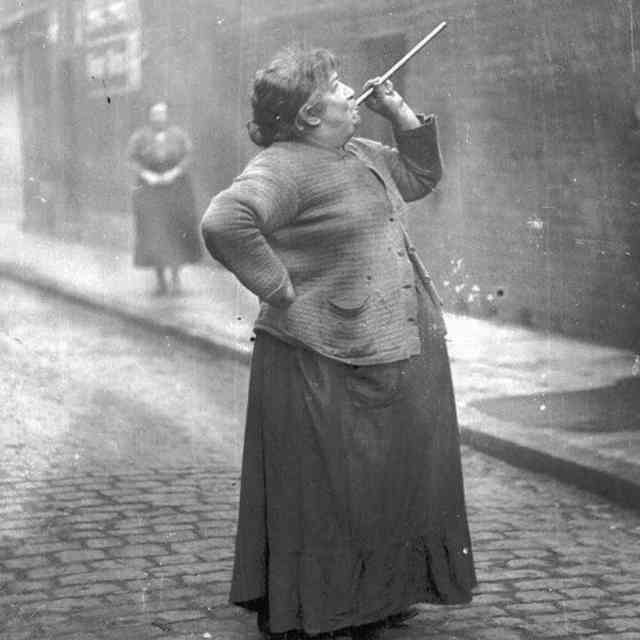
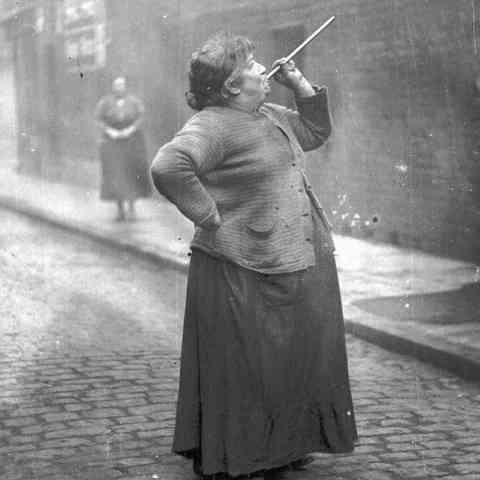
In order to have a knocker upper wake you up you could do one of two things: put a note on your door saying when you wanted to be woken up, or reach out to the knocker upper in person and let them know when to bang on your window. Thank goodness someone invented the alarm clock.
The first McDonalds in Moscow on opening day, 1990. It was the largest McDonald’s in the world at the time, with seating for 900 and a staff of 600 workers.
What says “freedom” more than McDonalds’? In 1990 the Soviet Union welcomed McDonald’s into mother Russia and people lined up for hours in order to get their first taste of American fast food. The 900 seat restaurant was certainly a marvel to the Russian people who weren’t used to this kind of thing, with one journalist calling the restaurant, “the expression of America’s rationalism and pragmatism toward food.”


A giant fast food restaurant was only the beginning of change in Russia. Two years after McDonald’s came to town the Soviet Union came to an end and Mikhail Gorbachev stepped down as the head of the government.
Transporting logs in Northern Michigan, 1908.
Well this is one way to move some product. In the early 20th century there were no massive trucks to drive lumber from place to place, lumberjacks had to rely on real, legitimate horse power. That, or the had to force the logs down river. However when there’s no water to use you’ve got to do what you can, and these fellows look like they’re having a great time.
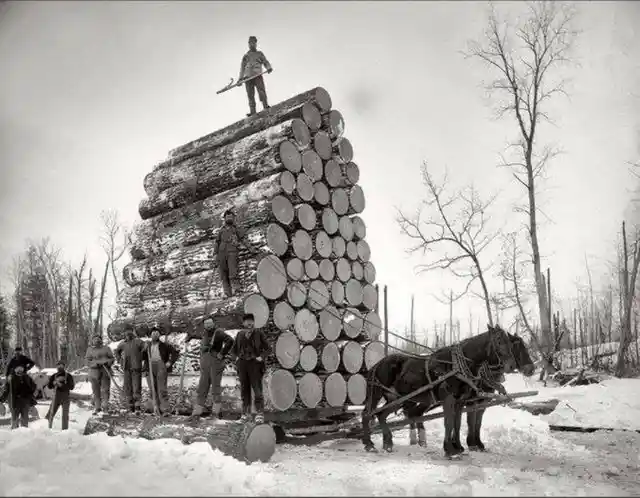
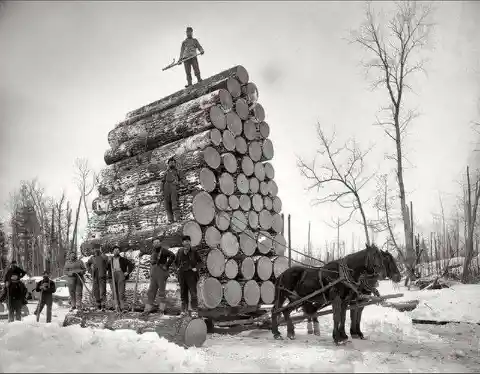
At Michigan in the time the logging industry was booming, and the lumberjacks were filling their pockets with cash with every tree that they felled. This towering stack of logs shows just how many trees loggers were moving in the early 1900s.
In 1997, Tom Petty took this picture at Jim Morrison's grave site, which shows Jim's ghostly image in the background.
Who better to capture the spirit of rock god Jim Morrison than the leader of the Heartbreakers himself, Tom Petty? In 1997 Tom Petty snapped a quick pic of rock historian Brett Meisner while hanging out in front of Morrison’s final resting place in the Pere Lachaise cemetery in France. Prior to his death Mesiner claims that he didn’t even notice the ghostly presence until 2002.
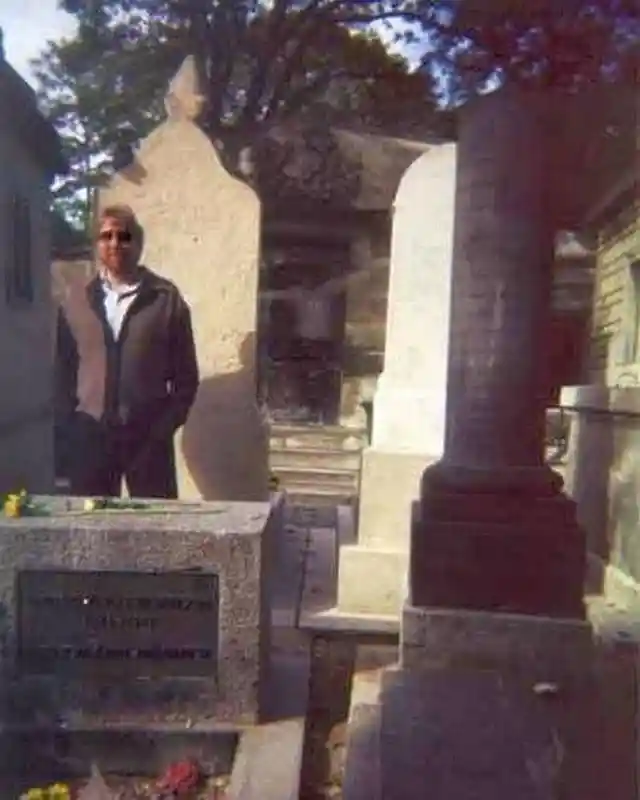
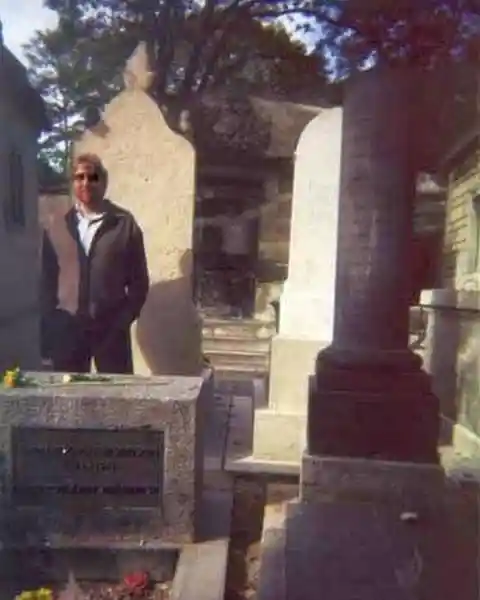
Meisner said that he continued to experience paranormal activity following the taking of the photo, most of it bad. He said, “At first it was sort of interesting to see how many people felt a spiritual bond with Jim and the photo, but now the whole vibe seems negative.”
A Dad from Salt Lake City, Utah, designed this beautiful headstone for his wheelchair-bound son.
This headstone is absolutely heartbreaking and absolutely astounding. In 1988 Ernest Robison’s son was born paralyzed from the neck down due to a lack of oxygen. He lived until the age of 11 until he passed away from complications due to his condition. Rather than simply get a standard headstone for his son, Ernest designed this statue that shows his son reaching for the heavens.
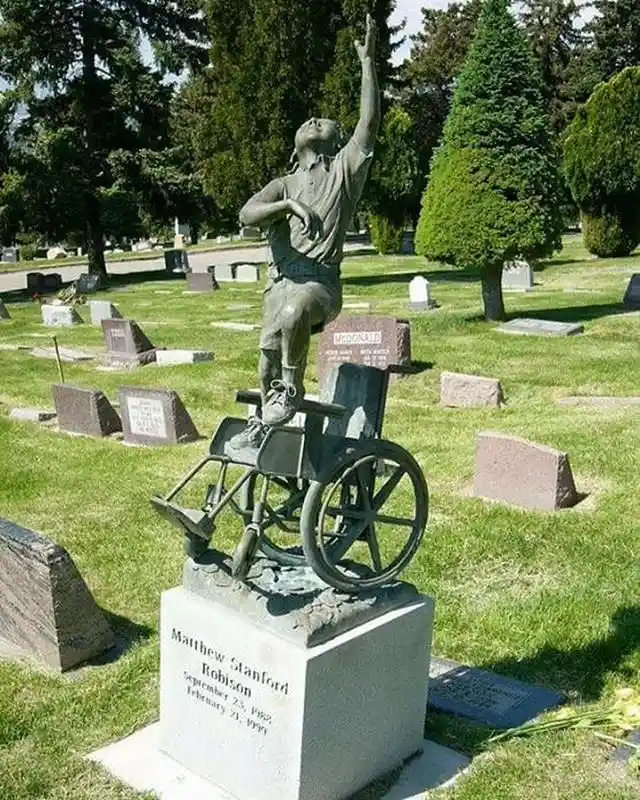
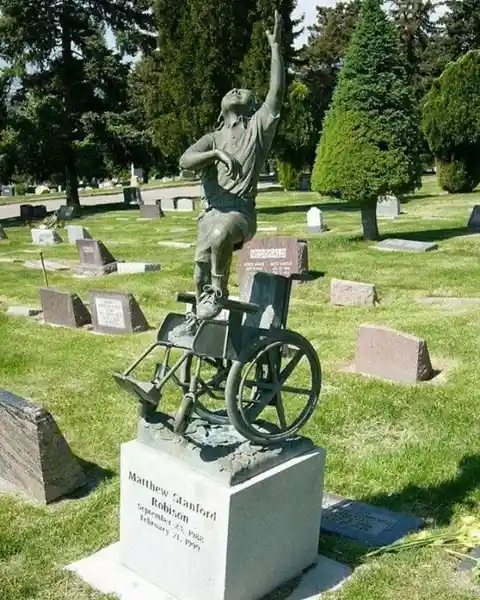
The Robison’s went onto create a non-profit organization that helps people with disabilities get rehab equipment that they can’t afford. Robison said, “Instead of sadness, the statue makes our son Matthew’s grave a place of happiness. Many others have found that true also.”
Mick Jagger and Jerry Hall switching outfits in France (1996).
Has there ever been a cooler couple on the planet? When Mick Jagger of the Rolling Stones got together with model Jerry Hall in 1977 they were the toast of England. In between the release of Black and Blue and Some Girls Jagger and Hall were splashed across the pages of the dirt sheets and they relished the attention.
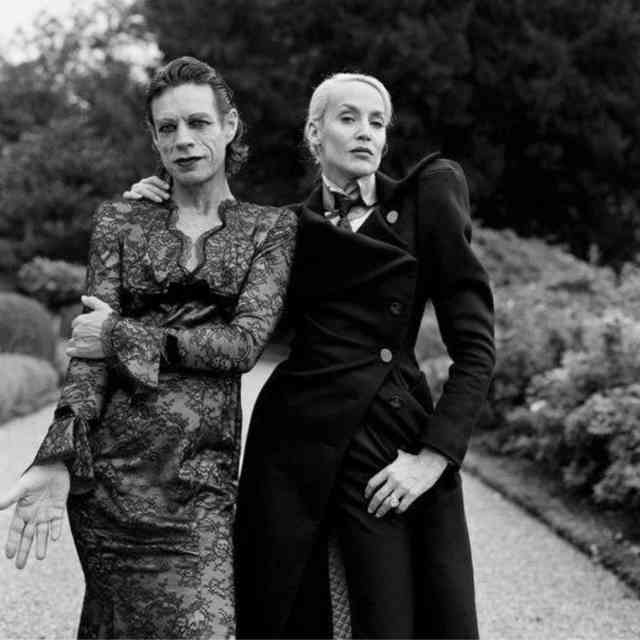
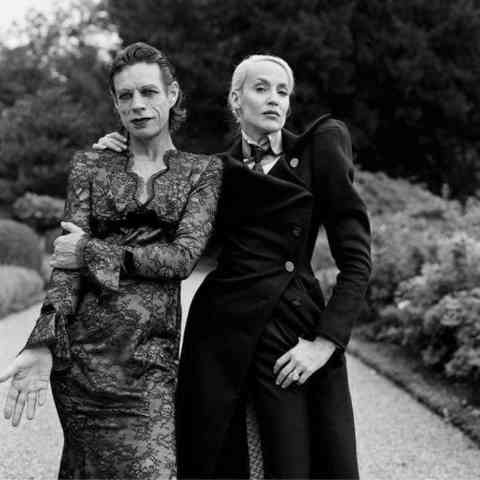
In 1990 Jagger and Hall took part in a private marriage ceremony in Bali, Indonesia before moving to Richmond, London and having four kids while continuing to create and appear in fashion ads. Throughout the ‘90s their relationship went through several permutations, and after Jagger and Hall decided to call it quits the ceremony in Bali was declared invalid, unlawful, and null and void by the High Court of England in 1999.
A married couple begs for the husband to not be deported to Germany in 1936.
In 1936 Otto Richter, a 21 year old German citizen, was faced with a terrible decision - become a fugitive from the law, or accept deportation to Germany where he was supposed to then go to Canada and request a legal entry to the United States. Richther escaped from Nazi Germany so this deportation was essentially a death sentence.


He petitioned to stay in America and did his best to get sympathy for his cause, but three years after this photo was taken Richter was deported to Germany. It’s unfortunate that he wasn’t allowed to stay safe in the states during World War II.
In the 1800s, pit bulls were often called "Nanny Dogs" because of the protective behavior they exhibit around children
Pitbulls are great. Even though many people believe that the dogs are hellacious fighters, however in the 19th century these little pups were believed to be the perfect babysitters because of how clingy they get when they’re around children. Not only are the dogs protective over the children in their charge, but they’re very loyal and stable if they’re raised well.
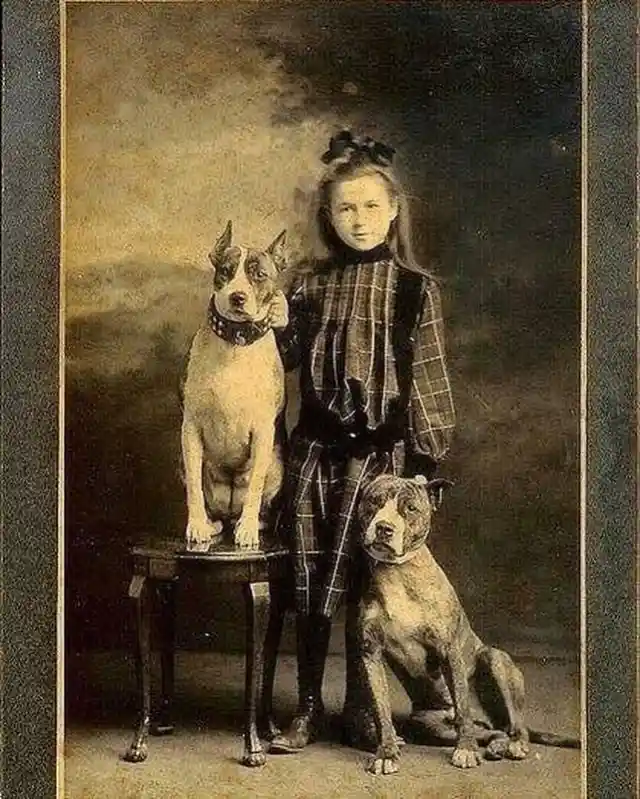

“Nanny dogs” were placed with children once they were old enough to be comfortable around dogs, which had to be great for any victorian boy or girl, who doesn’t want a dog? The two dogs in this photo look like good boys, they deserve a treat.
John Lennon and Yoko Ono on their wedding day 50 years ago. (March 20, 1969)
The most well known couple in rock history, John and Yoko were married on March 20, 1969 in Gibraltar after meeting three years earlier while Lennon was still married to his first wife Cynthia. The two went through a few different ideas for where they’d be married - on a boat to France was the first choice - they finally made do with a spot where they could be married as soon as Lennon’s divorce was finalized.
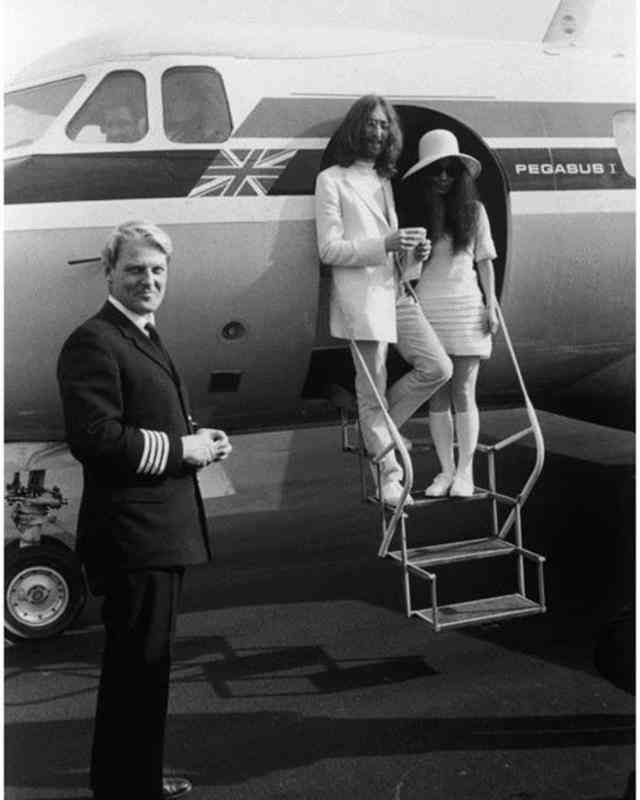
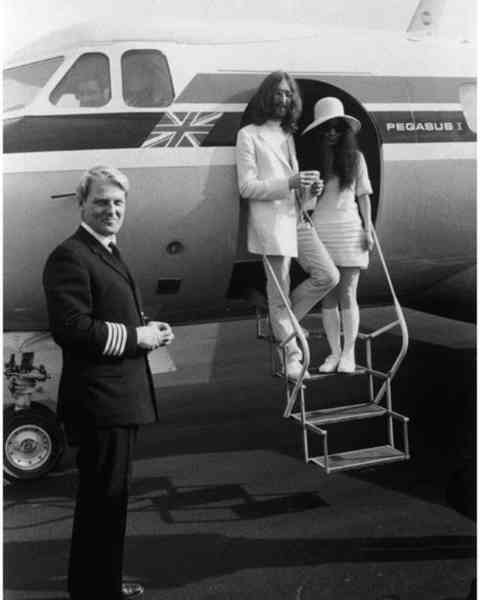
The ceremony took all of 10 minutes, and was attended by David Nutter, the band’s photographer. Following the ceremony John and Yoko went to Amsterdam where they staged their famous “bed-in” at the Hilton hotel.
The Harlem Hellfighters back from WWI, wearing their Cross of War medals. (1919)
One story that begs to be told is that of the Harlem Hellfighters, a completely African-American infantry unit who spent more time fighting in World War I than any other American unit. Even though these brave men fought harder than anyone else in the war they were still faced with horrific racism and segregation once they returned home.

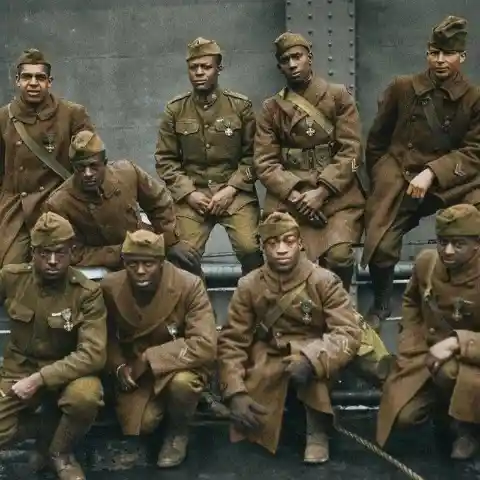
Most of the Harlem Hellfighters were from New York City, and they were the first black troops to join the National Guard following years of petitioning the government to let them serve. According to Hellfighter Arthur P. Davis, “To be somebody you had to belong to the 15th Infantry.”
Roller skating in style, 1909.
Roller skating has been one of the world’s favorite past times since 1760 when Belgium inventor John Joseph Merlin introduced them as a way for folks to feel the freedom of ice skating anywhere they wanted. When skates came to America they’d changed from simply having wheels attached to wooden shoes which made the skates hard to maneuver.


These new “quad” skates made it easier for folks to maneuver around while they were on wheels, which is really what you want. It’s likely that the folks in this photo wouldn’t have been able to hold onto their hats if they were still using 16th century skates.
Sioux girl with her doll, 1890.
Even though they were displaced long before the end of the 19th century, by 1890 the Sioux Nation had yet to face their worst indignity. Over the course of their existence the Sioux were split into being the Dakota and the Lakota, and on December 29, 1890, the 7th Cavalry Regiment surrounded the Lakota in order to force them to move to Omaha, Nebraska.
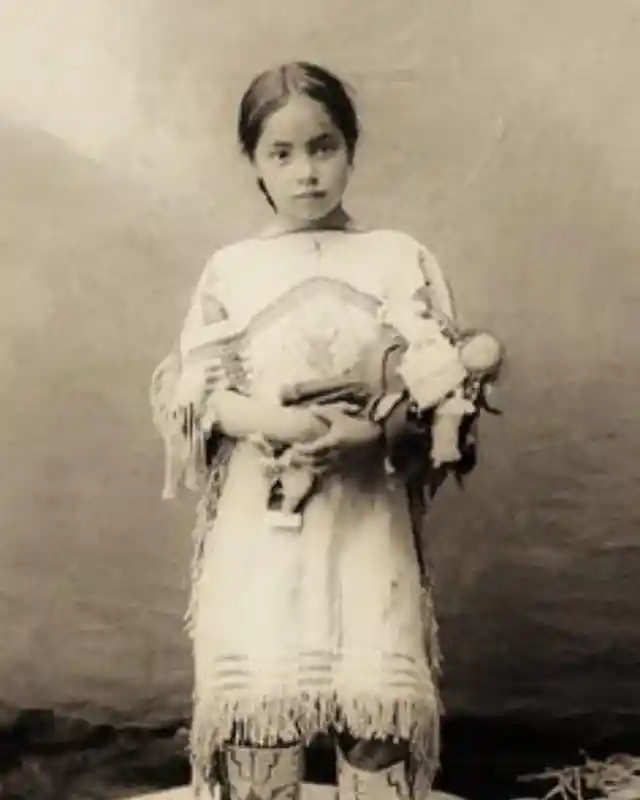
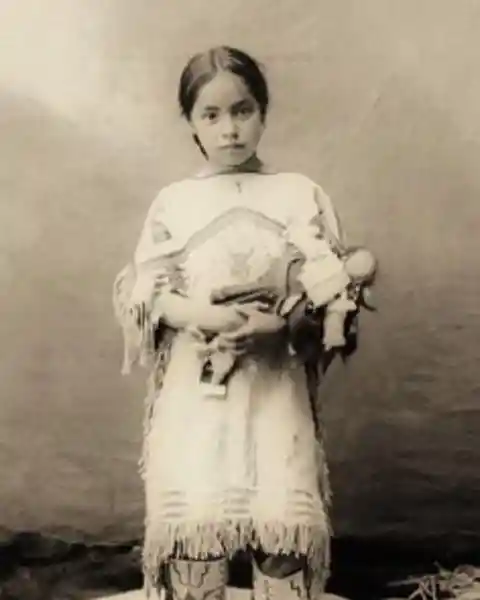
The Lakota didn’t want to leave Wounded Knee Creek, so the 7th Calvary fired on them until 150 of the Lakota Sioux were dead. After burying the men, women, and children in a mass grave the 9th Calvary moved onto a nearby reservation in order to watch over the remaining Sioux.
Elton John, Diana Ross, and Cher backstage at the Grammy Awards. (1975)
The 17th annual Grammy Awards may have been hosted by Andy Williams, but Elton John, Cher, and Diana Ross stole the show. At the time, John was at the height of his bedazzled showman persona, following the release of Caribou, an album that features "Don't Let the Sun Go Down on Me.” At the same time Cher was riding a Golden Globe win for The Sonny & Cher Comedy Hour.

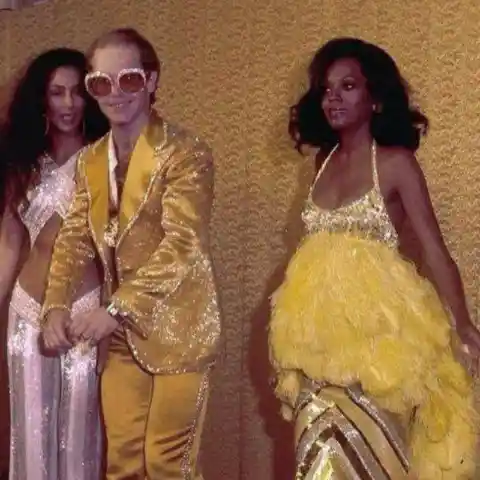
Diana Ross was also having a killer beginning to the 1970s. In ’74 she was the first African-American woman to co-host the 46th Academy Awards. Why these three didn’t get to host the Grammys is lost on us.
Santa Claus costume from the early 1900s.
AH! No thank you! So it turns out that Santa Claus wasn’t always the cherubic figure that we know and love. It seems in that at one point Santa Claus was actually some kind of paper mache demon. Imagine seeing this creature coming down your chimney in the middle of the night, even if he said that he was just popping in to bring you presents you wouldn’t believe him.
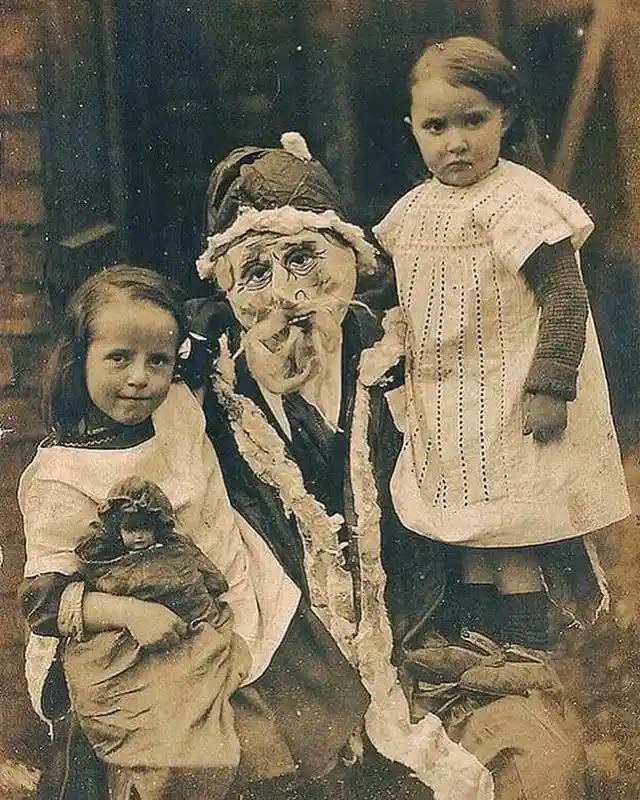

All jokes aside, people were just scraping by in the early 20th century and the fact that this fellow could put together a Santa costume is laudable, even if it’s terrifying.
A trip to the dentist in 1892.
No, this isn’t a still from an unreleased version of Sweeney Todd, it’s a trip to the dentist at the end of the 19th century. It goes without saying that over one hundred years ago dental science wasn’t anywhere near where it is now, and that in order to pull a tooth dentists often had to rely on their personal strength and if they were lucky someone who wasn’t going to jump around while they had a pair of pliers rooting around in their mouths.
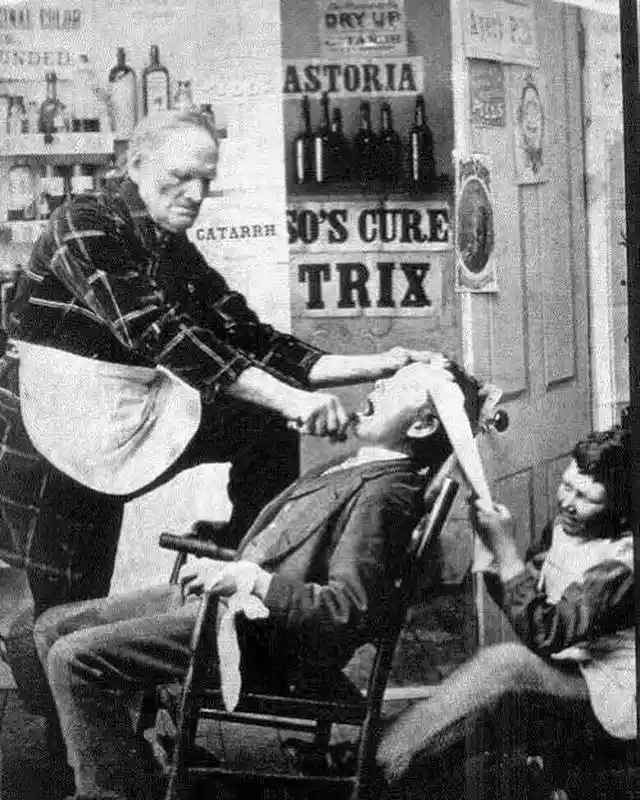

This fellow looks like he’s having a terrible time on his trip to the dentist, and frankly this dentist doesn’t look like he really knows how to perform an oral operation. Still, you’ve got to crawl before you can walk.
Ron Howard, Steven Spielberg, Martin Scorsese, Brian De Palma, George Lucas, Robert Zemeckis and Francis Ford Coppola celebrating Lucas's 50th birthday in 1994.
What a table full of killers! Well, not real killers but rather cinematic wunderkinds who formed the basis for modern cinema. Each of these guys has played a major part in shaping the American blockbuster in one way or another. Obviously Spielberg and Lucas know each other from way back, but De Palma and Scorsese are almost mirror image versions of Lucas an his Indiana Jones cohort.
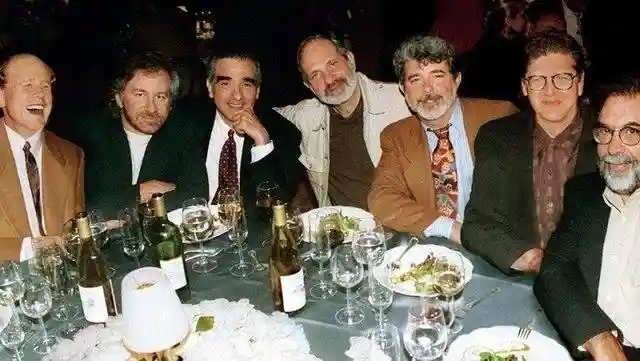

Who knows what these guys were talking about? Do you think they spoke about movies? Or were they trying to talk about anything but movies? Oh to be the fly in a glass of chardonnay at this table.
A fluffy Arctic fox kit shedding his winter coat.
Arctic foxes are one of the most resilient creatures on planet Earth. They’re built to survive incredibly cold temperatures near the Arctic Circle, and they can live in places where the temperature gets down to –58°F.
How can something so small make it through a world so cold? The coats of arctic foxes are meant to both keep these animals warm and to shield them in the tundra landscape.


They mostly eat birds, fish, and rodents, but when things get really cold they’ll follow polar bears around and eat the leftovers that a polar bear don’t want. Like children, if things get really dire they’ll eat vegetables.
Roller skating carhop in the 1950s.
Is there anything that makes you feel more nostalgic than seeing a carhop delivering food on a set of roller skates? Back in the day when carhops were really putting themselves into work, it just felt cool to see your food sailing towards you at the speed of eight wheels.
Carhops first started coming about in the early 20s, but by the the 1950s they were at every drive-in restaurant across the country.
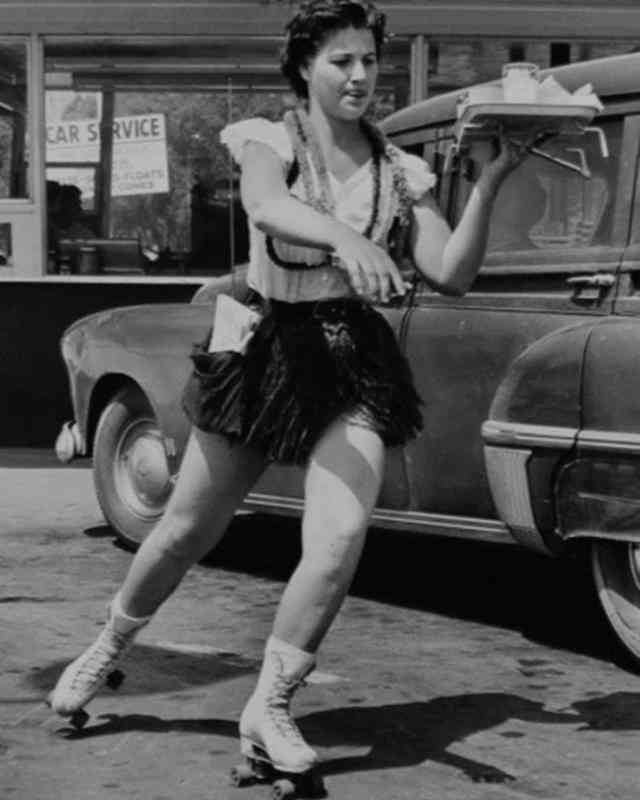

In the ‘50s fast food wasn’t just something to grab and shove in your face, they were restaurants meant to give families a break from making dinner for one night out of the week. We’ve truly lost something with the decline of roller skating car hops.
A young Romani couple from the 1890s.
The Romani people are unique, not only in their interesting style of dress and culture, but because they aren’t technically from anywhere. The Romanis - also known as gypsies - are known for constantly traveling, who are believed to have originated in northern India, although they’re closely related with Eastern Europe and even the Americas.
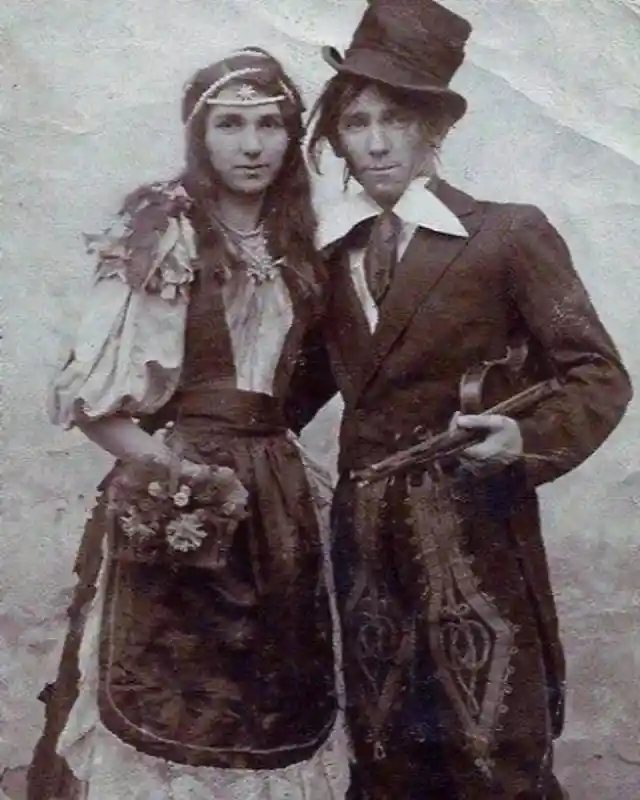

By the late 19th century the Romani people could be found traveling across the world, from England and Scotland to New York City. Beginning in 1888 the Gypsy Lore Society started to publish a journal that was meant to dispel rumors about their lifestyle.
Khalkha noblewoman from Mongolia, 1908.
The largest group of people in Mongolia are the Khalkhas. Even though you mostly know the name “Mongolian,” the Khalkha dialect is the official language of Mongolia, spoken by most of the country’s population. Even though most of the country speaks Khalkha, they were initially a nomadic people until Genghis Khan trained them to become a warlike people.
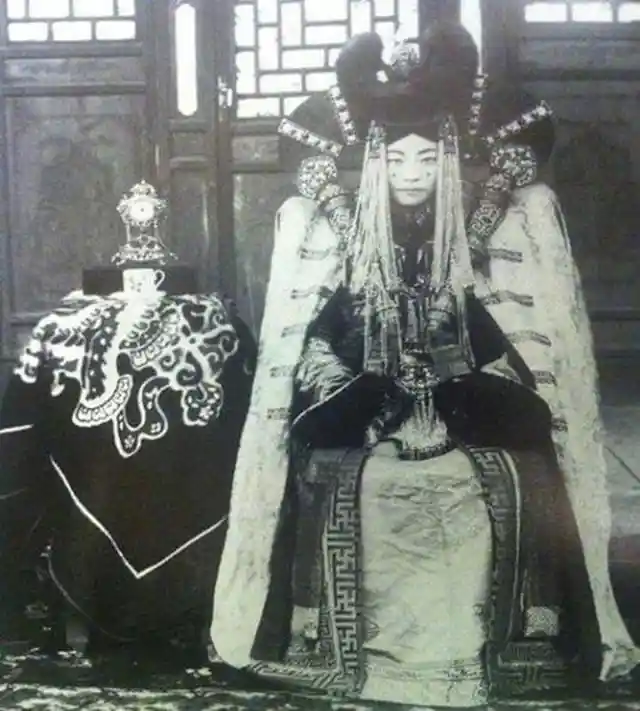
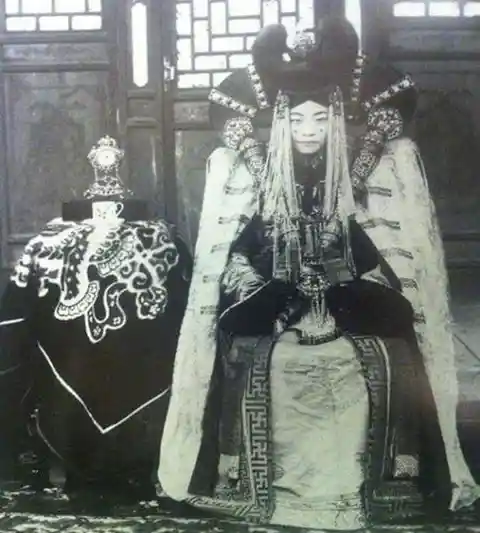
When they weren’t taking part in imperialism, the Khalkha people could be found working as livestock herders. By the 1990s many of the Khalkha people had moved to a large urban setting. However in the early 20th century many of them could be found living in buddhist monasteries.
Felix Baumgartner becoming the first skydiver to break the speed of sound, reaching a speed of 833.9mph. Wow!
Put yourself in Felix Baumgartner’s shoes. You want to do something great, specifically breaking the speed of sound. The only way to do this is to start from such a high point that you have no choice but to move at such an insane speed that you have to explode through the sound barrier.


Baumgartner jumped from a balloon at about 24 miles above New Mexico and it took him almost 10 minutes to reach the ground.
Are you shuddering just thinking about this jump? Baumgartner told BBC:
The crew of "The Little Rascals," 1935.
For a certain generation, The Little Rascals are a cultural touchstone that showed many young people that children could act too, and the antics were also full of inspiring hijinks. While the Rascals were first known as “Our Gang,” they’ve transcended beyond simply being a historical artifact and have become an important piece of cinematic history.
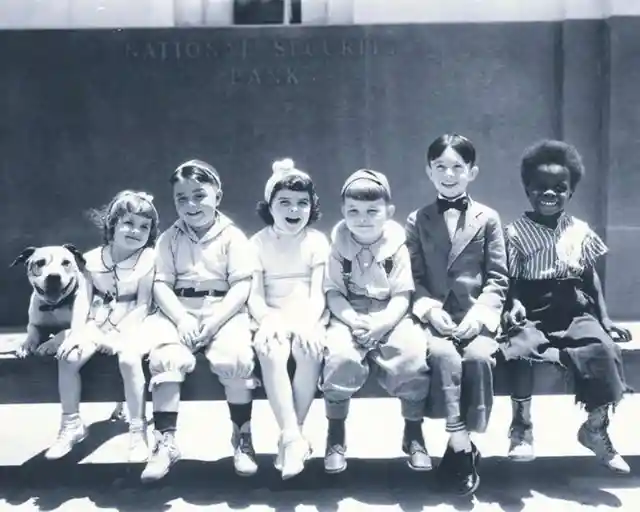
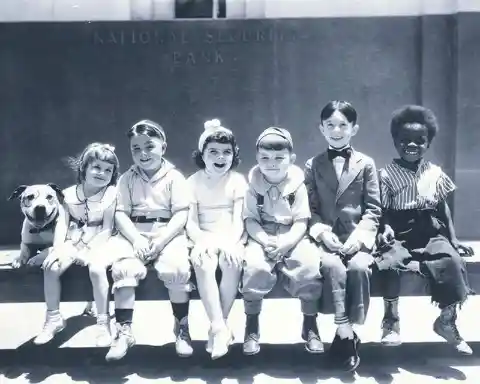
By the mid 1930s the Little Rascals transitioned to being more of a family comedy feating Spanky McFarland and his parents, however members of the Our Gang gang often popped up in the episodes. 1935 was also the year that there was a major cast turnover, although it was done so subtly that it was hard to tell.
Little boy trying to carry his Christmas tree home in 1900.
Christmas has always been a big deal, and in the early 20th century when families were still scraping together change in order to make ends meat they made sure to take a break during the winter holiday to think about what really mattered. This young boy is obviously excited for Christmas and wants to help out in any way possible.
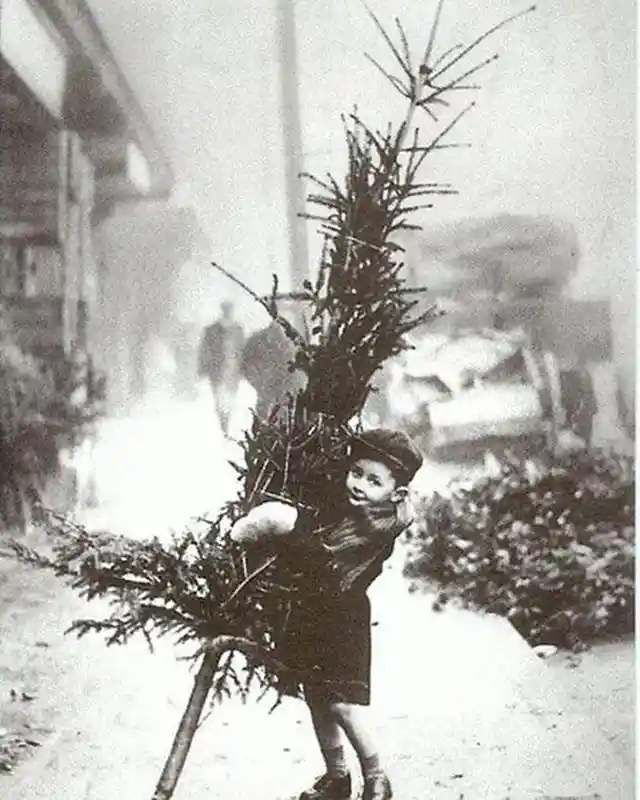

The concept of a Christmas tree dates back to the 16th century, and by 1882 the trees were being covered in electric decorations. However, who’s to say if this young boy had blinking Christmas lights or if he preferred the metallic sheen of tinsel.
Cool couple Ricky and Ralph Lauren in 1964, they've been married almost 55 years. Ricky is an author, artist, psychotherapist and photographer while husband Ralph is a famous fashion designer and philanthropist.
Ralph Lauren really is the one guy who has life all figured out. Not only does he have a clothing line that’s worth billions of dollars, but he’s managed to find a way to balance his home and work life, which seems impossible for a lot of business people.

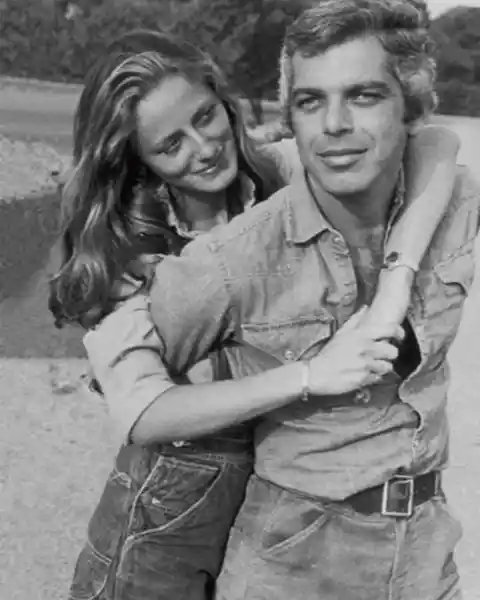
In 1964 he married his wife, Ricky, in New York City just six months after meeting her. It really was love at first sight.
The loving husband and wife have three children together who’ve all become successful in one way or another. Their son David is even the Executive Vice President of Global Advertising, Marketing, and Communications at Ralph Lauren Corporation. Like father like son.
This fully unearthed statue of an Easter Island "Moai" was carved by the Rapa Nui people sometime between the years of 1250 and 1500.
This huge Moai, or the living faces of deified ancestors, was carved between 1100–1680 AD and there are 887 of these stone statues across Easter Island, a small spot off the Chilean coast line. The faces were carved by the Rapa Nui people, and most of them sit exactly where they were created, near the the extinct volcano Rano Raraku.


While most of the Moai are where they were carved, a small percentage of the statues were moved to where they sit now. Each face represents the deceased head of a lineage and they’re carved using stone hand chisels while being splashed with water in order to soften the stone. Now that you know how to carve one, why not make your own?
This mining horse posing for the camera with co-workers.
Mining horses, otherwise known as “pit ponies” replaced children working in mines during the late 19th century and early 20th century. The horses started working after a mine was flooded in 1838, killing 26 children who were working as trappers.

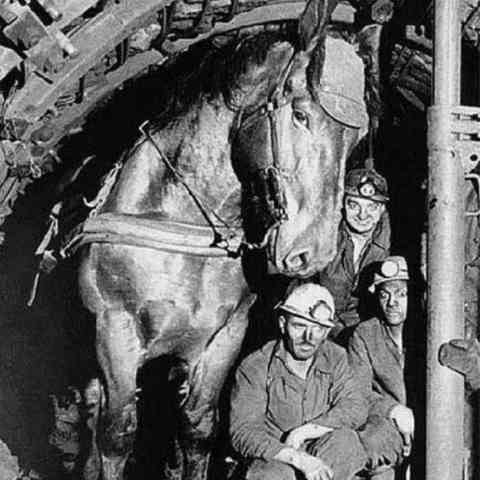
When mining horses were first put to use they were brought into pull carts and move coal throughout the tunnels in which they worked.
By 1913 there were 70,000 mining horses working in English coal mines. While Shetland ponies were being used across the pond, American coal mines tended to use donkeys. Throughout the early 20th century there was a lot of regulation that went into using pit ponies, and by the 1960s these mining horses were phased out.
A pretty 'Gibson Girl' named Eva Mae "Doll" Copple from Nebraska, early 1900s.
Gibson Girls were a unique kind model. Rather than having their pictures taken, these young women were illustrated by artist Charles Dana Gibson from the late 19th century into the early 20th century. While real women modeled for him, Gibson believed that these girls were a combination of girls from all over America, almost like they’re a special brand of American girl.
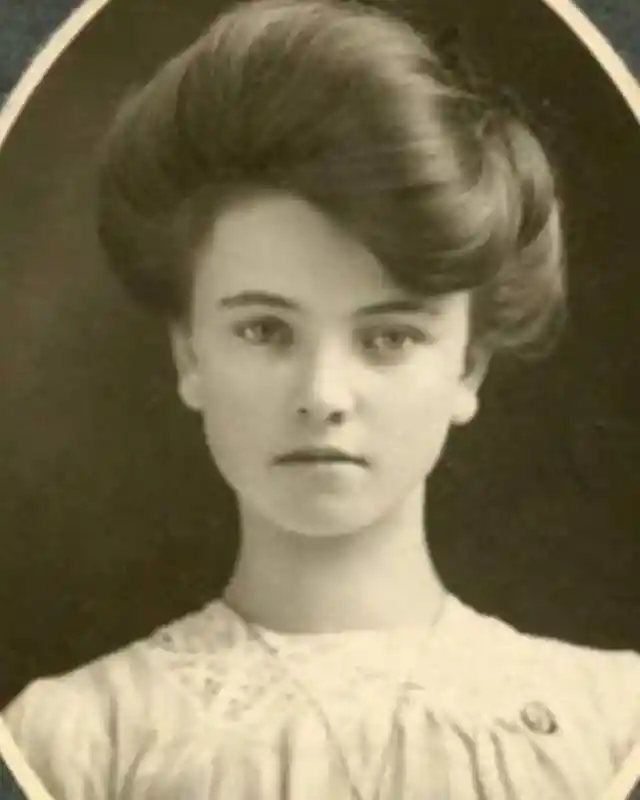
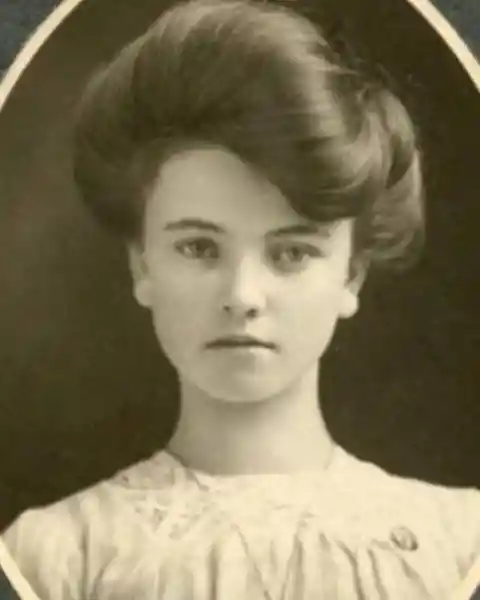
These illustrations were seen as a depiction of contemporary society where women were dainty creatures who were also voluptuous, essentially they were meant to be everything to everyone. Aside from their ease of nature, the easiest way to spot a Gibson Girl was the pile of curls on top of her head.
A wartime selfie from the 1940s.
It’s not just young people who are obsessed with taking selfies, people have been interested in snapping photos of themselves since the advent of the camera. Even Van Gogh painted portraits of himself. If you’ve seen a lot selfies from the ‘40s then you know that these wartime cuties have managed to snap a really nice photo with there camera.
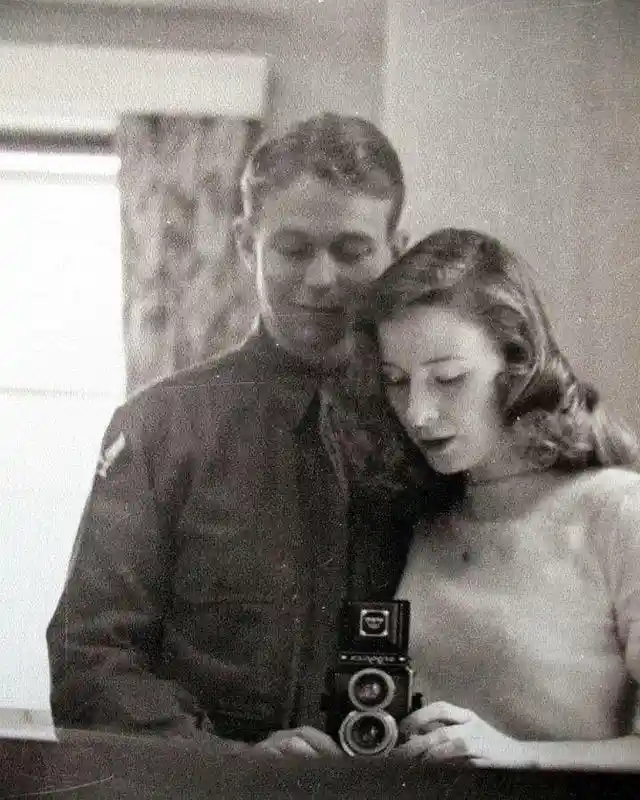
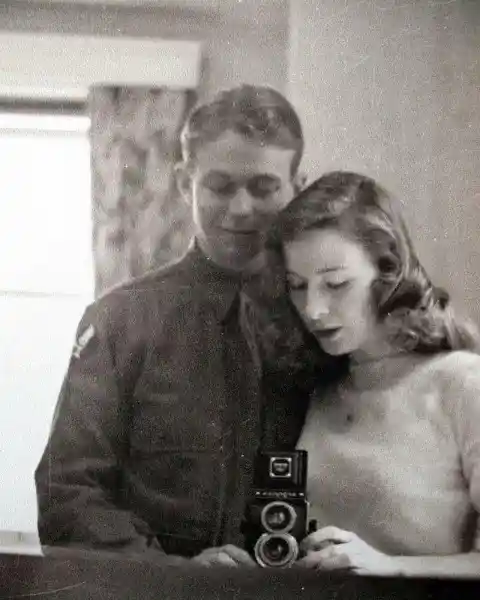
Many similar selfies tend to be out of focus, or the frame is all wrong, but these two were able to take a great photo that sums up an era of photography that required quite a bit of skill to master, something that folks who stick to selfies on their phone don’t know anything about.
Alain Delon, Marianne Faithfull and her boyfriend Mick Jagger at a restaurant in Paris, 1967. Alain and Marianne starred in the 1968 film "The Girl on a Motorcycle."
Has anyone ever looked quite as bored as Mick Jagger does at this restaurant? While Faithful is known as one of Jagger’s famous girlfriends, she was one of the most prominent female performers of the British Invasion. Throughout the ‘60s she had a sting of hits like "As Tears Go By,” and "Come and Stay With Me,” the former was written by Mick Jagger and Keith Richards.


Jagger and Faithful were an item from 1966 to 1970, and in that time she was a major part of the Rolling Stone’s story. She was caught during a drug bust at Keith Richards's house, and supposedly Jagger wrote some of the most well known Stones songs about her included “You Can’t Always Get What You Want.”
Bobbi Gibb wanted to be a part of the 1966 Boston Marathon. The organizers sent her a disqualifying letter stating that women are “not physiologically able to run a marathon.”
Even though there were huge strides in civil rights and women’s liberation in the 1960s, it might have well been the dark ages in other aspects. In 1966 Bobbi Gibb desperately wanted to run the Boston Marathon, a 26 mile test of endurance that’s regarded as one of the most important amateur races in the country.
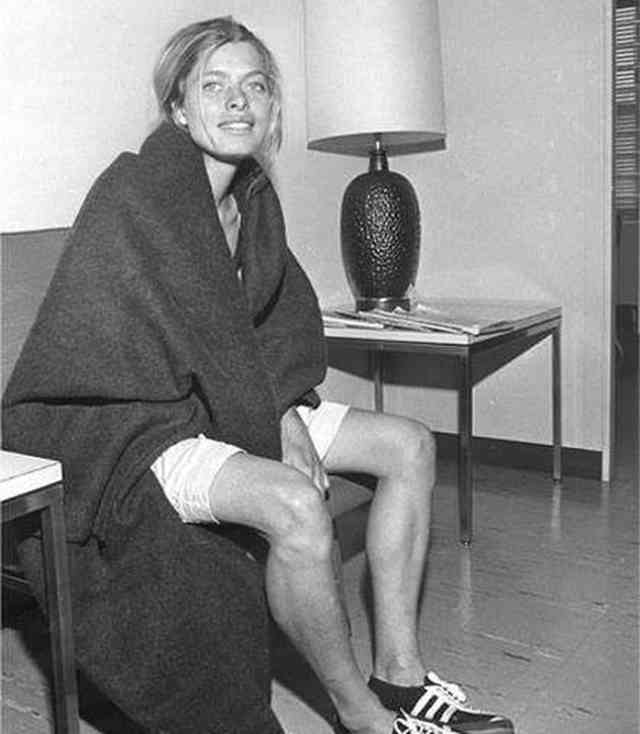
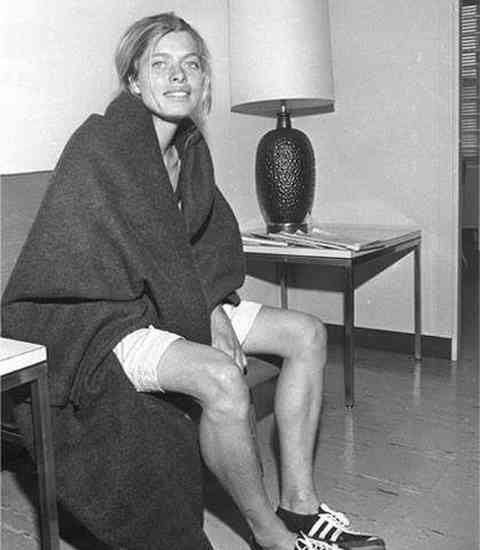
Even though she ran 40 miles a day in preparation for the race, she was denied entry because race director Will Cloney believed that women weren’t physically capable of running long distances.
On April 19, 1966, Gibb dressed in her brother’s clothes and joined the race near the starting pen. When men realized that Gibbs was a woman they cheered her on, and when she finished the race the Governor of Massachusetts, John Volpe, was waiting there to shake her hand.
Daguerreotype of a Civil War-era beauty.
This Civil War beauty was photographed thanks to the inventor Louis-Jacques-Mandé Daguerre,the man behind the daguerreotype. While modern photographs are created by a chemical process where images are copied onto paper (to put it as simply as possible), daguerreotypes are made by polishing a sheet of silver-plated copper until it has a mirror-like sheen.
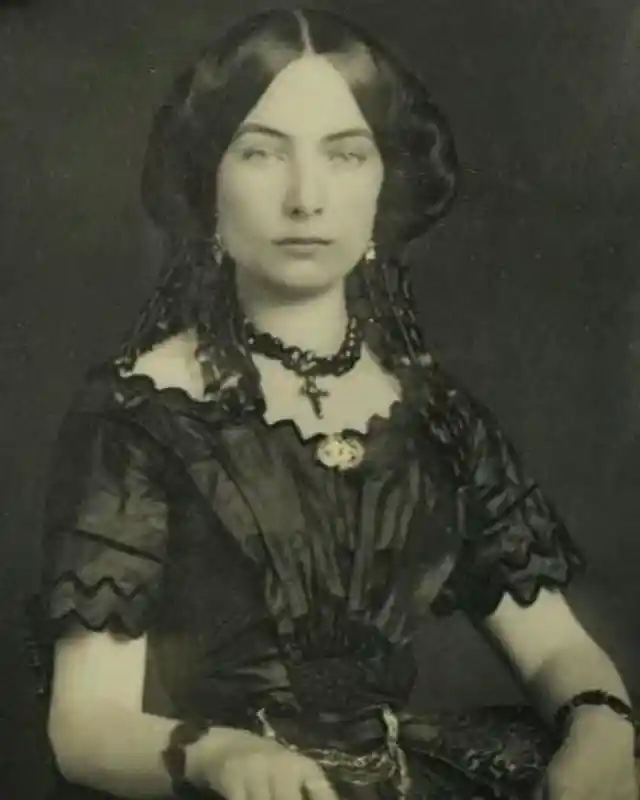
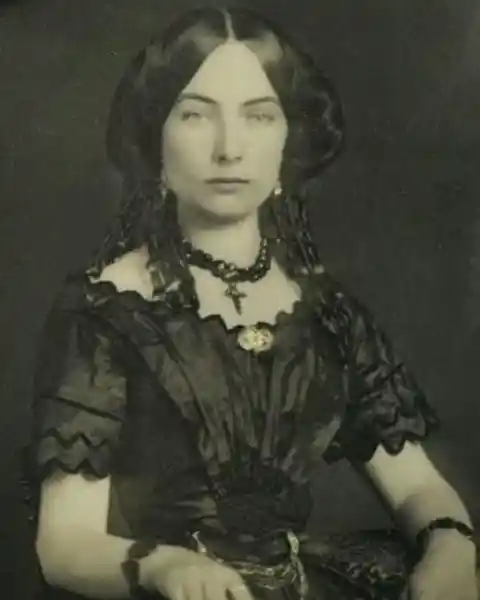
Once an image is committed to the plate it’s treated with chemical fumes that bring out the image. Initially, daguerreotypes had a “slow” exposure time that meant that subjects had to sit for minutes at a time in order to get a good image. In 1841, new lenses were developed that lessened the exposure time.
Dating back to the year 1592, the Crooked House of Windsor is the oldest teahouse in all of England. Construction began over 425 years ago!
When you think of classic British tea houses there’s nothing that’s more iconic than the Crooked House of Windsor. Just try saying it without a cockney accent, you can’t. The building was constructed in 1592 at the edge of Windsor’s marker square. Initially this hastily built and crooked house was a butcher shop, however the building’s changed hands multiple times.
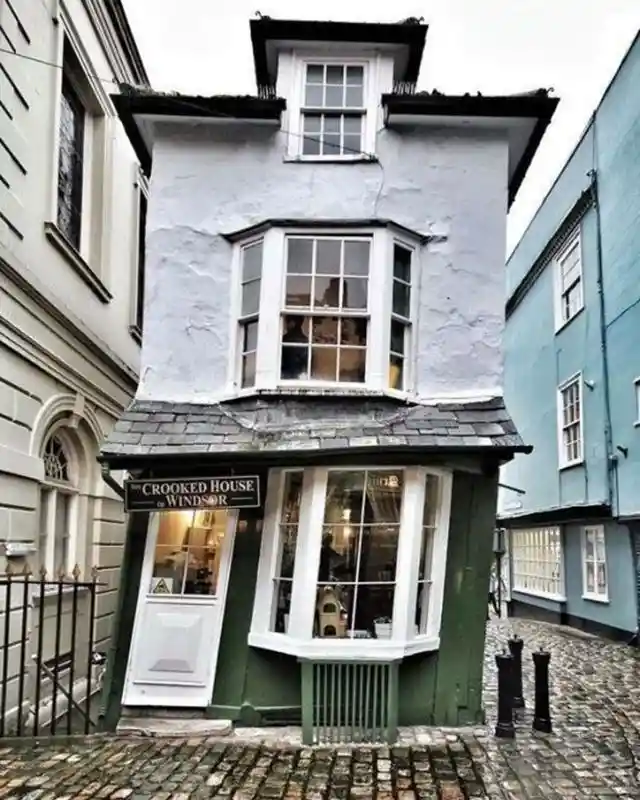
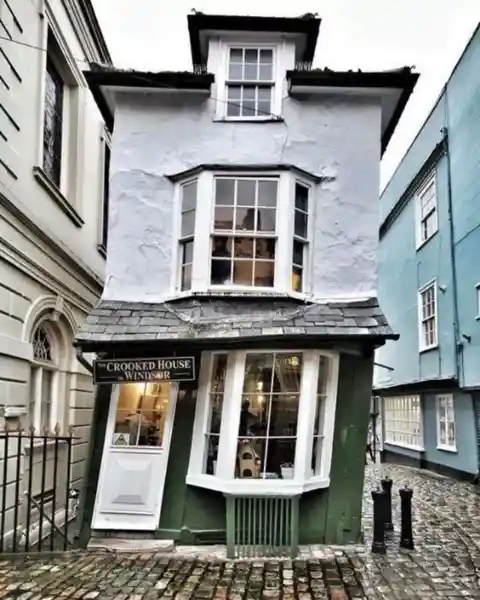
The house has been everything from a jewelry store to a brewery, and each time it changes the house is painted a different, wonky color. As much the house changes, the one thing that remains the same is its crooked slant.
Dracula's Castle in Romania, 1929.
Bran Castle, otherwise known as the house of Vlad Dracul is a must see for visitors to Romania and a genuine wonder of Eastern Europe. The castle was constructed in the 14th century as a stronghold in the Carpathian Mountains. Even though Bram Stoker never visited Bran Castle, he still used it as the loose inspiration behind his novel Dracula.
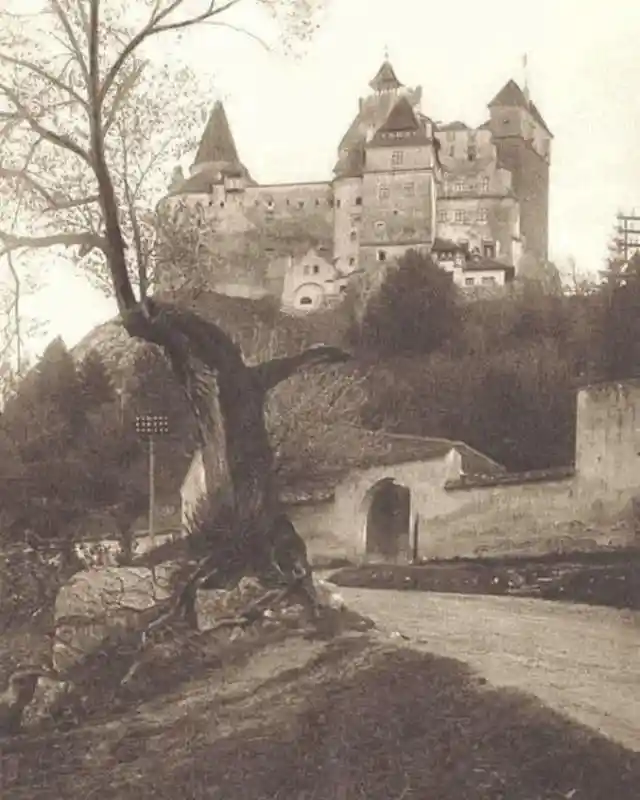
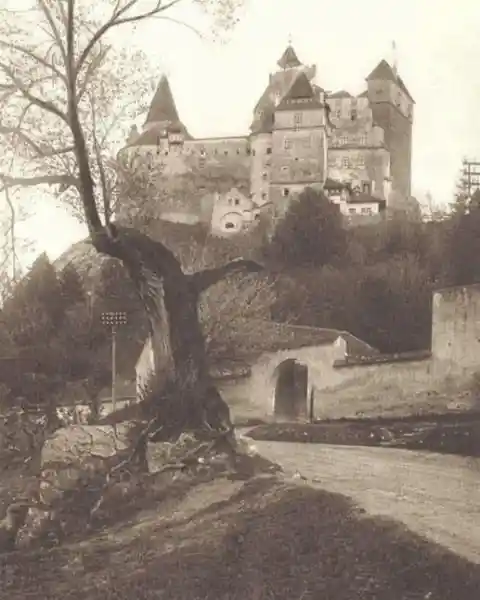
As spooky as it is, the castle itself is actually pretty nice. The castle has a 57-room chateâu behind its thick walls. There’s an inner courtyard and even a hidden library. Wouldn’t you want to live there if you were an ageless vampire?
Ireland, 1915.
In 1915 Ireland was at the crossroads of modernity and the old world. The makeup of Dublin was changing, with the wealthiest of Ireland moving out of the city and into the surrounding suburbs. The homes that were left behind were soon turned into slums that filled up with the poorest of Ireland. At the time, the death rate was incredibly high and survival was a daily fight.
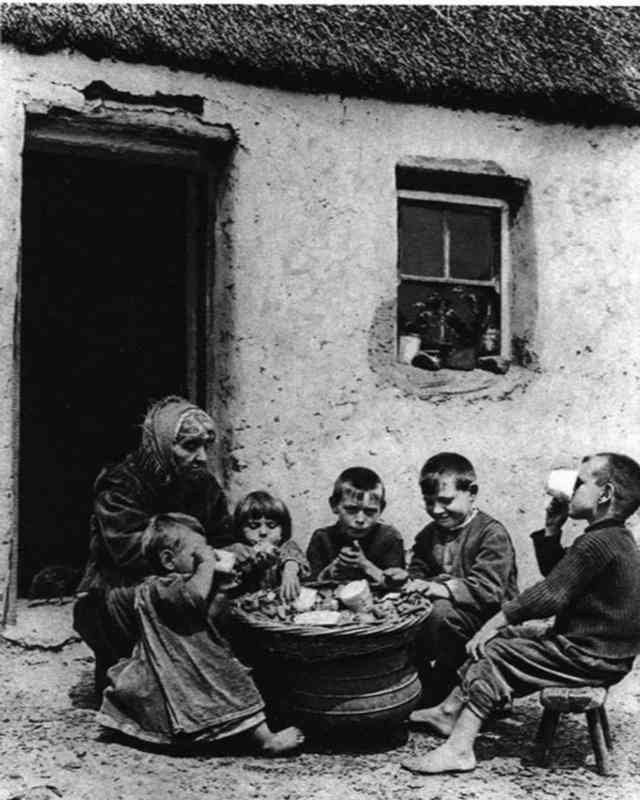

Even though urban Ireland was at a nadir, it still wasn’t a hub of violent crime. The biggest issues in Dublin at the time were public intoxication and theft, hardly crimes that can be seen as bringing on the decline of western civilization. In spite of Ireland’s downturn, things would look up at the beginning of World War I.
Laurel and Hardy in Dun Laoghaire, Ireland on their tour in 1953.
Laurel and Hardy started working together onstage and in films dating back to the late 1920s, however by the time they made it to Ireland in 1953 their act was on its last legs. However, Irish fans didn’t know that the duo was on the outs with Hollywood, and when they arrived in Cobh on the deck of the SS America in September 9, 1953, the city rang out its bells in celebration.
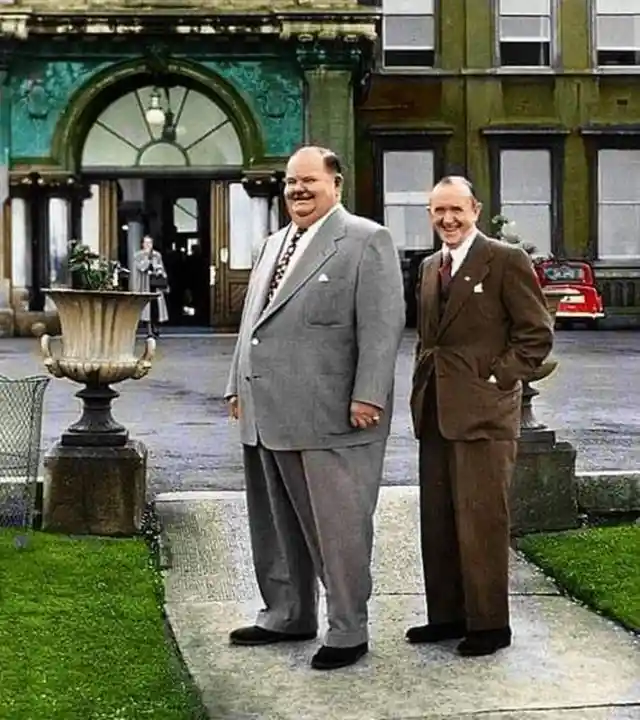

When Laurel and Hardy arrived onshore they were beset with fans and well-wishers, but the first thing the comedians wanted to do was head off to the church so they could think the bell-ringers who welcomed them to the country.
Leonardo DiCaprio and Kate Winslet on the set of "Titanic". (1997)
James Cameron’s Titanic is both one of the most engaging love stories of the 20th century, and a tale of man’s desire to do something memorable, something big.
When you’re making a piece of art that’s as big as this film, it’s impossible to get across the finish line without having a few problems. The exhaustion seen on the faces of Kate and Leo in this photo show just how hard these kids were working.
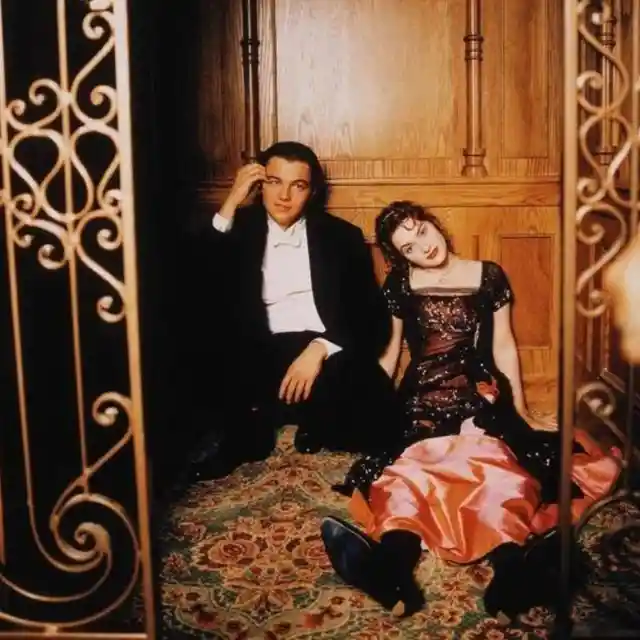
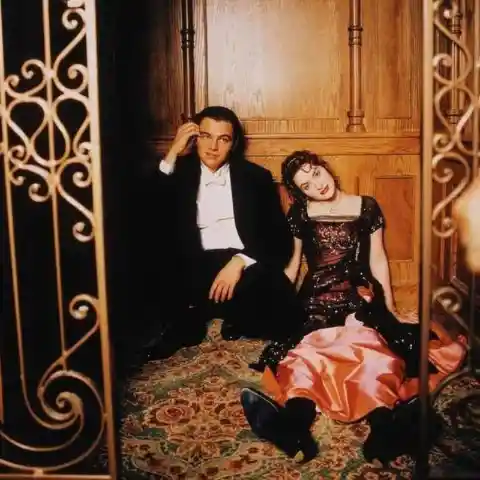
Winslet later said that while working on the film she caught hypothermia in the water, and while filming in Canada many members of the cast and crew were drugged with PCP. That’s not great, but the film went onto be one of the most successful features of all time.
London (1890)
19th century London was a city on the precipice of something great. The town was growing by leaps and bounds in ways both positive and negative.
During the 1800s London became the world’s largest city, and the capital of an Empire that had yet to see the sun go down. Large groups of Irish and Asian immigrants moved into the city during the Victorian era, and while poverty continued to rise, the city was also at the center of global economic markets.
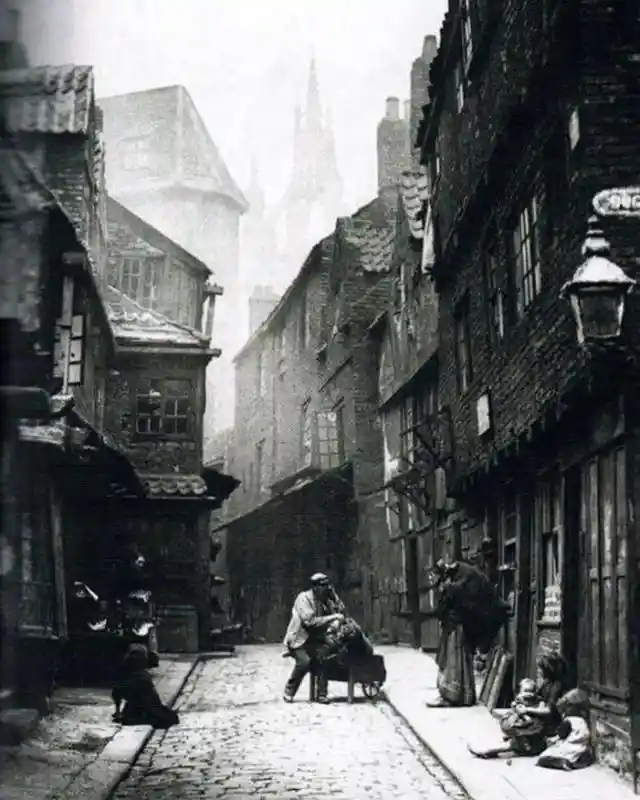
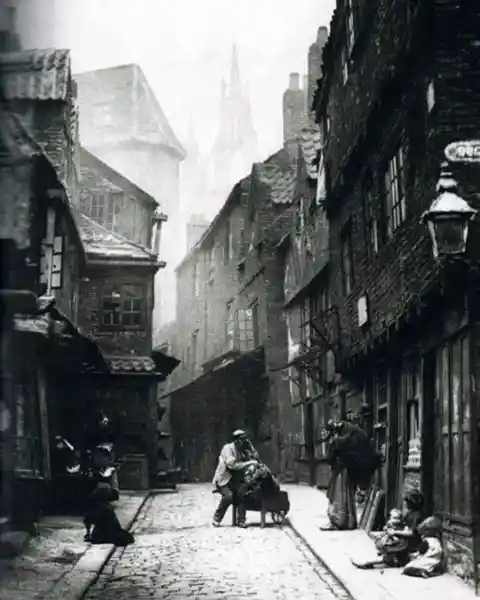
1890 is most importantly remembered as the year that the London Underground opened its first “tube.” By 1894 228,605,000 passengers would regularly use London’s three underground lines.
Worn out footsteps at Wycoller Hall in the north of England.
You may not know Wycoller Hall, but if you’re a fan of Charlotte Bronte then you’ve already taken a trip down these well worn stairs. Wycoller, first built in the 16th century, served as the inspiration for Jane Eyre. While Bronte was working on her gothic masterpiece she was living in Haworth, which is a stone’s throw from Wycoller.
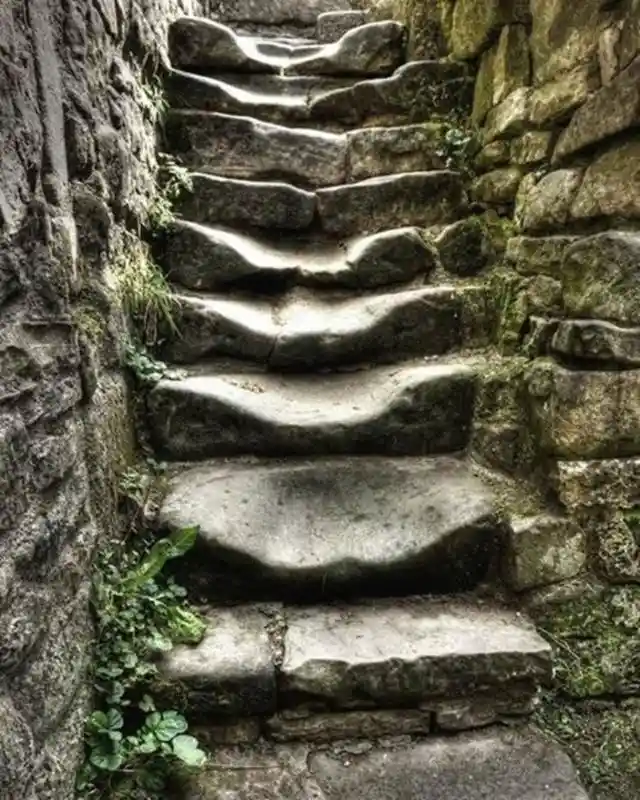
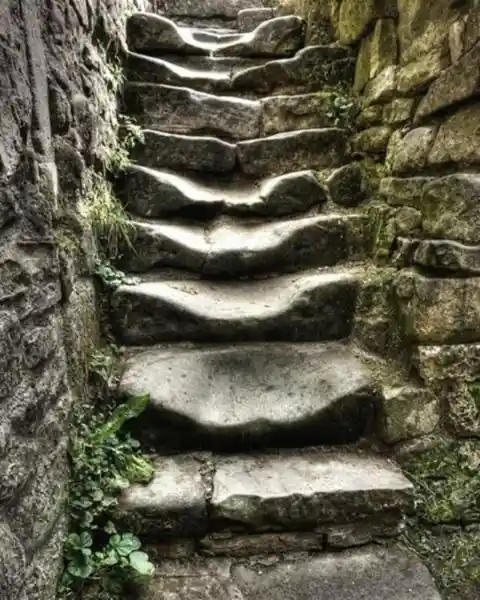
Initially, Wycoller Hall was built by the Hartley’s and it was in constant construction until the 18th century. After the final owner, Squire Cunliffe, passed away stones from the Hall were stolen in order to build nearby houses. Now, Wycoller Hall sits in ruins.
Zitkála Šá (which means 'Red Bird' in Lakota) was the first Native American woman to write an opera, 1898.
A rarely spoken about but incredibly important writer and translator is Zitkála-Šá, otherwise known as Gertrude Simmons Bonnin. Being a writer of Yankton Dakota Sioux origin, much of her work dealt with cultural identity, specifically the difference between the mainstream world in which she found herself and her culture which was being constantly stripped away.
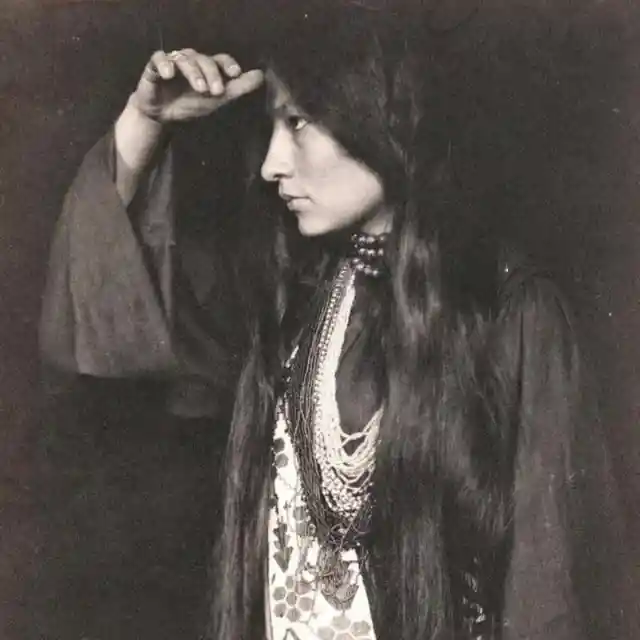
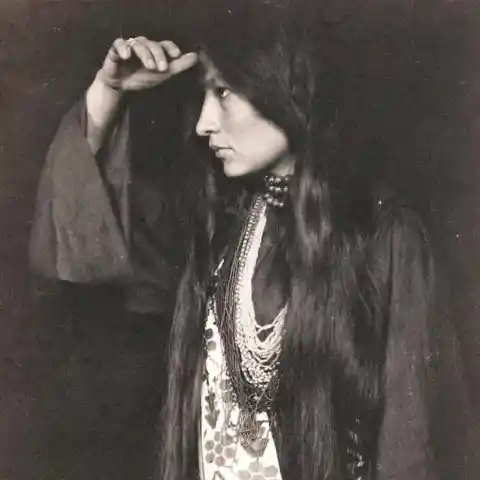
Aside writing about her identity, Zitkála-Šá wrote The Sun Dance Opera, the first opera by a Native American and featuring members of the Ute Nation. She passed away at the age of 61 in 1938. Her work has been reissued by the University of Nebraska.
A turtle coming out of brumation.
This turtle is just waking up from brumation, a state similar to hibernation that cold blooded animals go through in order to deal with cold weather.
While many reptiles go through brumation, it’s most common in box turtles who can hibernate for up to five months out of the year. When brumation begins turtles have a decreased appetite and for the most part they hibernate somewhat underground.


Brumation ends for titles when the weather hits about 60 degrees. They slowly come to and start to look around for water, however they’re not ready to eat food until they warm up and their bodies are prepped for digestion.
Goodyear’s illuminated tires were never mass produced. (1961)
These tires look like they belong in Tron, and as cool as that sounds they never made it to mass production. The light up tires were invented in the early 1960s by Goodyear.
They’re constructed out of Neothane, a synthetic polyurethane rubber that’s easier to produce than traditional tires. Aside from being easier to construct Goodyear said that the tires were more resistant than their rubber counterparts.
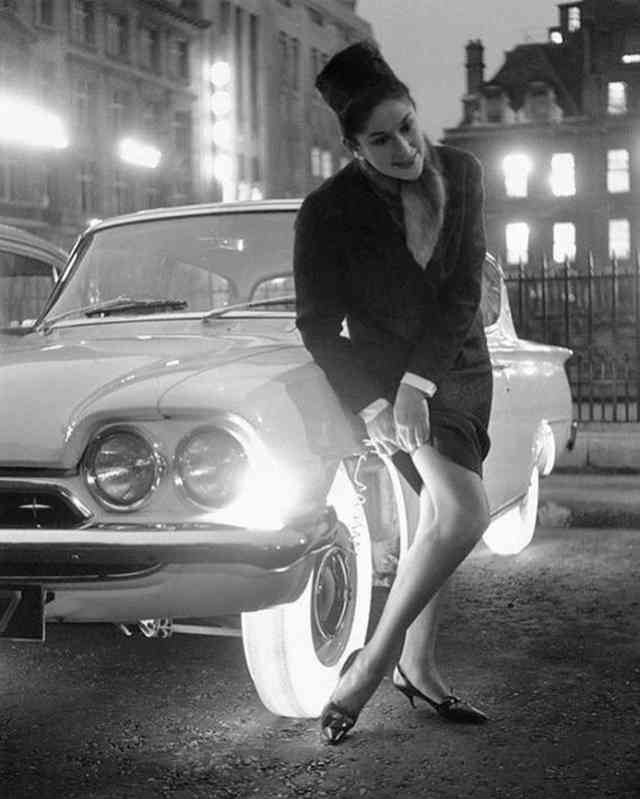
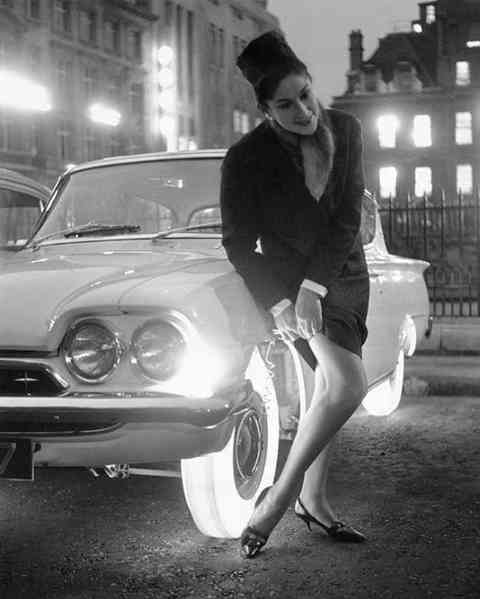
Aside from being easier to produce the tires were also translucent, something Goodyear took advantage of by adding dye to the rubber. This addition of dye ended up producing a vibrant hue in the tire, and when hit with rims of light the tires literally glowed in the dark. Unfortunately, the light up tires just weren’t practical and Goodyear stuck with regular old tires.
Driving school course in the 1970s.
If you were learning to drive in the 1970s, before you could even think about getting behind the wheel of a car and putting that pedal to the metal you had to take a successful ride in the simulator. In order to drive in a simulator you had to sit in what was basically an arcade driving game and take a trip around a digital city along with 20 other students.

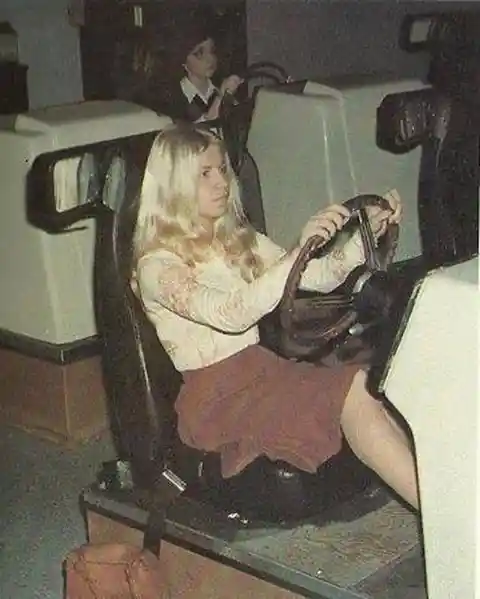
In some instances a kid on a bicycle would ride out in front of your simulated car and you’d have to hit your breaks. Students would be graded on their reaction times as well as their mistakes. If you scored high enough then you finally got to get behind the wheel of a training car.
The Men of '72 Highlanders who served in the Crimean War in 1854.
Ottoman Empire, France, Britain and Sardinia which included these Highlanders from Scotland. The Scottish Highlanders were tasked with defending the British camp, and in order to do that they formed the “thin red line,” named so for the color of their clothing - it came to represent British composure in battle.

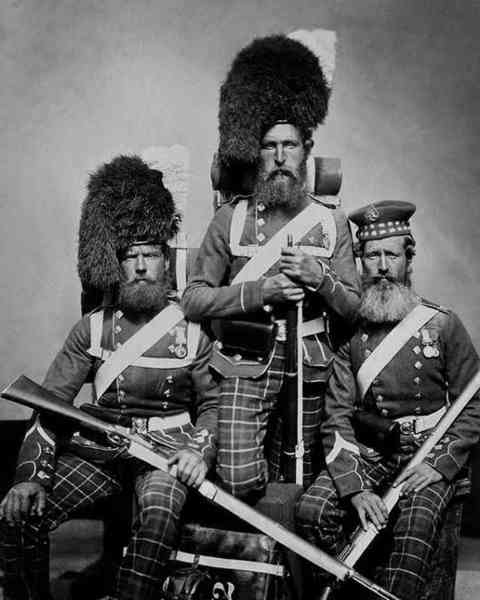
The highlanders were zealous to get into a fight, which is one of the reasons that the Russians were so freaked out. At the end of the three year war a treaty was signed that was meant to shut down a Russian naval base, but that never happened. Still, nobody messed with these Scottish blokes again.
Wooden cottage nestled in the Tatra Mountains of Poland
This house in Poland doesn’t just have one of the most fascinating roofs we’ve ever seen, it also looks like it’s absolutely bulging with architectural magic. The angles on this house are fascinating, the roof feels almost victorian, but the further the house moves down the more round everything looks, it’s almost like somewhere that an elf would live.
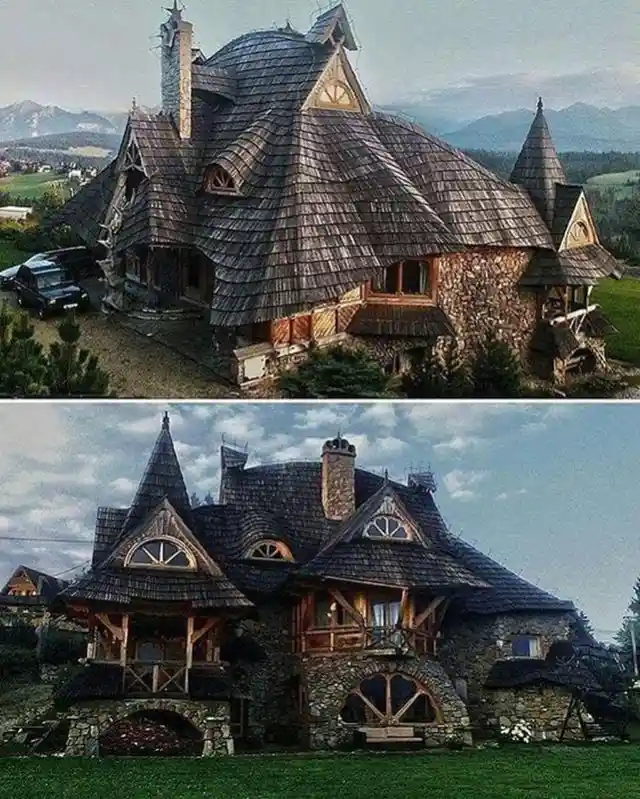
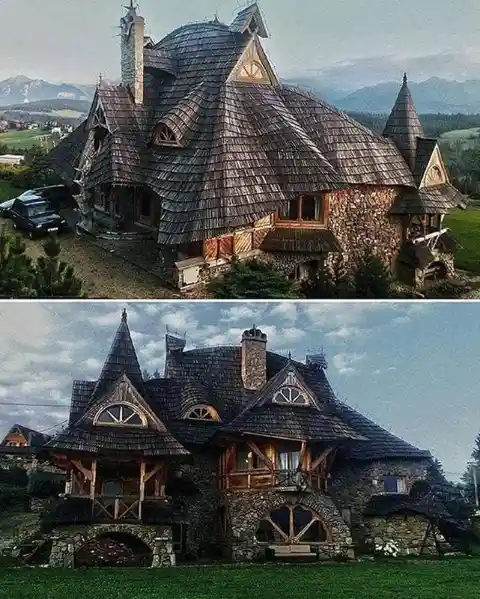
If you get a chance to check out this supremely strange house in Poland then you’ve got to go for it, if for no other reason then to see what the rooms look like. After all, with a roof like that the ceilings have to be magnificent.
A logging family stands by the 1,300 year-old, 330 foot-tall sequoia tree known as 'Mark Twain' in 1892.
This family is standing in front of “Mark Twain” a massive sequoia in Big Stump Grove, Kings Canyon National Park that was felled for exhibition in 1891.
In order to chop down the tree loggers first had to dig a massive trench around the sequoia in order to prevent breakage as the tree went down. Speaking of getting it down, it took loggers eight days to actually cut the tree down to size.

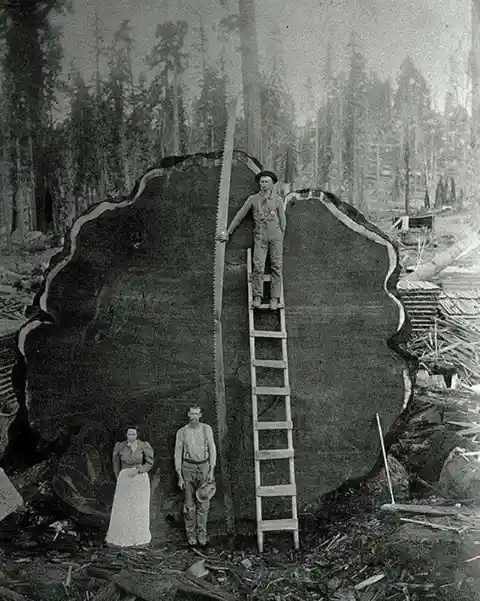
The base of the tree was given to the American Museum of Natural History in New York City, while a higher section of the tree was given as a gift to the British Museum in London, and the rest of the tree was cut up for construction use.
Posing with an ostrich in Paris, 1910.
What better way to spend a day out on the town then snapping a quick pic with an ostrich? These Parisians are obviously making the best of their time by checking out a petting zoo, likely the Ménagerie du Jardin des plantes - a zoo that’s located near the Seine in the centre of Paris. The Ménagerie contains both a botanical garden and plenty of animals.

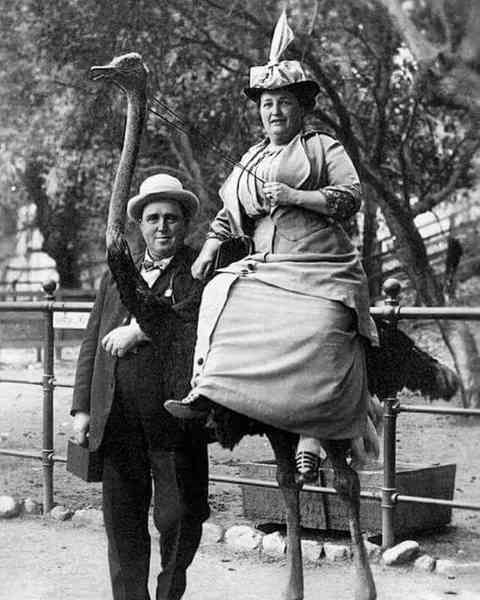
The botanical garden and zoo has been in operation since 1794, which means that couple have been popping by this spot to take in the wildlife and see the sights that aren’t on offer in Paris. Go by sometime and pose with a big ol’ bird.
Gilbert Kerr, a member of the Scottish National Antarctic Expedition, plays the bagpipes in full Highland dress for a penguin while the Scotia was stuck in the ice on the Weddell Sea in 1904.
The Scottish National Antarctic Expedition was an outing lead by a scientist from the from the University of Edinburgh named William Speirs Bruce. The voyage lasted from 1902 to 1904 and after heading past Buenos Aires the ship went straight to the Antarctic Circle. Things were smooth until March 3 when the ship reached an ice barrier.
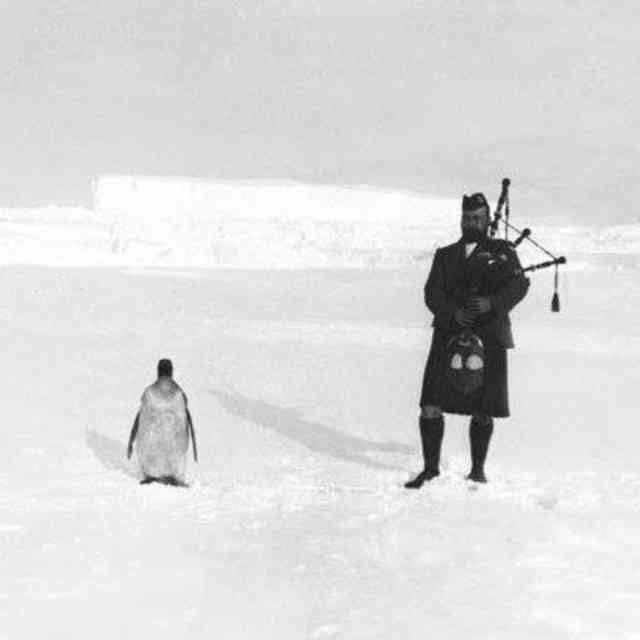
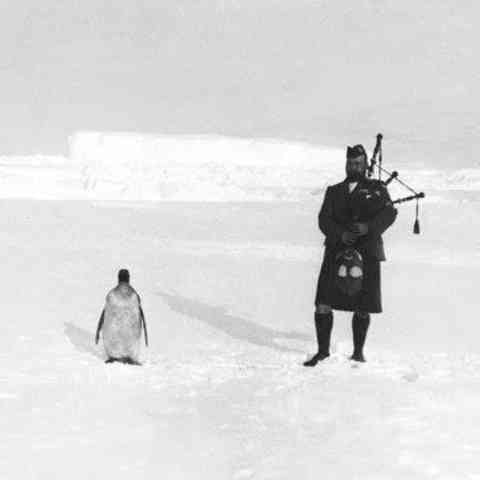
The ship continued to slowly move through the ice until March 9 when it became stuck in very heavy pack ice. While the ship was stuck at this period Gilbert Kerr took advantage of the their time and played his bagpipes for this sweet little penguin.
Girl holding her chicken, 1900s.
In the early 1900s jobs and money were scarce, so if you were able to actually own an animal that produced food you were doing okay.
Even though this young woman looks like she’s living a rags to rags story, you have to remember that not only does she own a chicken - which is huge by the way - but she’s in a position to have her photo taken and developed, something that was much harder to do in the early 20th century than it is now.
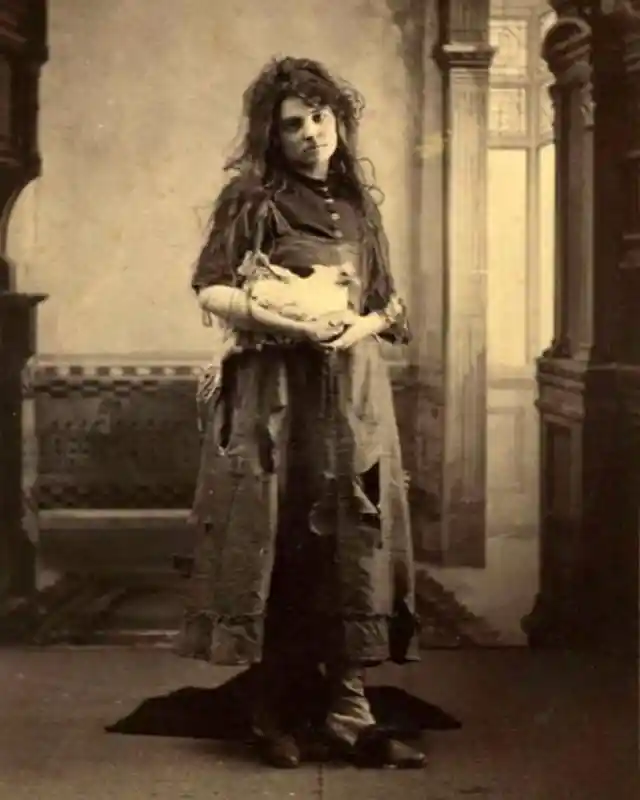
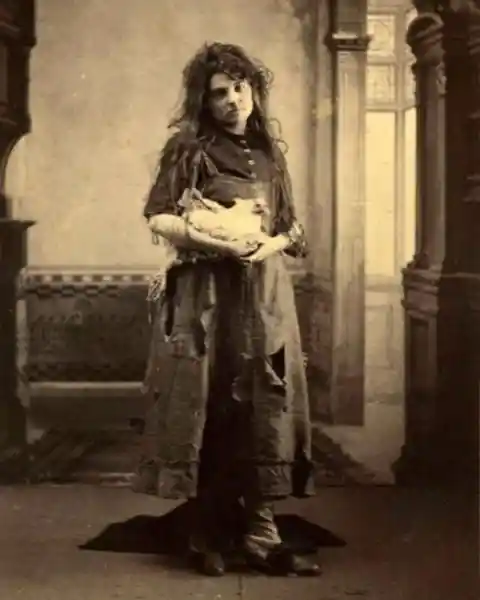
Many families that owned chickens were able to get by when some families were working as itinerant farmers weren’t so lucky. In many instances, these chickens were both friends and sources of food.
Swallows Nest Castle, Ukraine.
This precariously placed tourist magnet is one of the most fascinating structures in Eastern Europe. Not only does it sit on the edge of a cliff, but this building that’s been everything from a small wooden hut (seriously) to an Italian restaurant. The castle was constructed in 1911 and it’s changed hands multiple times.

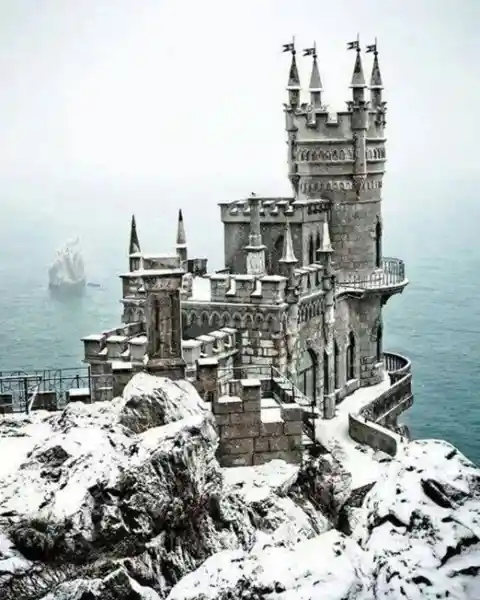
Even if you’ve never been to Gaspra and seen this castle in person you’ve still seen Swallow’s Nest in film and television. The castle has been used in Agatha Christie's And Then There Were None and Mio in the Land of Faraway. However the screen doesn't do this castle justice and it must be seen in person to be believed.
The cat that thought it was a photographer back in 1909.
Well this is just too cute. It seems that even in the early 1900s cats were the most curious of pets. While it’s clear that this cat has discovered the viewfinder on this camera, what do you think it’s thinking about the image it’s seeing? Does it realize that it’s looking through a small window? Or does it think that there’s a small family trapped inside this box?
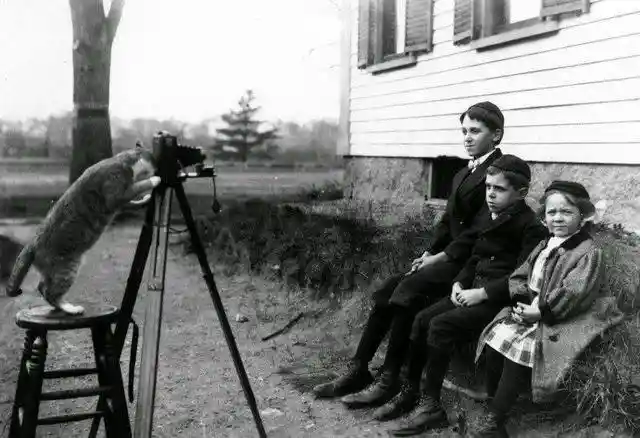

The most astounding thing about this photo is the way that the family was able to get their cat to stand still in order to grab this photo? You know good and well that if this was a dog there’s no way the photo would be this clean.
The earth and moon from space. Wow! (Photo by NASA)
Holy moly what a view! Even though we think we have an idea of what space looks like, it’s clear that the outreaches of the solar system are much more nuanced than what we imagine. At times it’s easy to think that the moon is simply while, and that space is black, but that’s far to simple for something as complicated as space.


It’s clear from this photo from NASA that outer space is full of a variety of shapes and colors. The oranges of the solar system stand out against the browns of the moon and the heavenly blues of Earth in ways we never could have imagined.
Traffic in Central Park, New York. (1900)
Don’t you just hate it when you’re going through Central Park and you’re stopped behind some guy in a carriage? In 1900 a carriage driver making the rounds through New York City was a regular sight, but it’s certainly something to see in this day and age.
Many of these horse and buggies were a part of the Hansom Cab Company, a transportation business that operated in New York City and Miami.
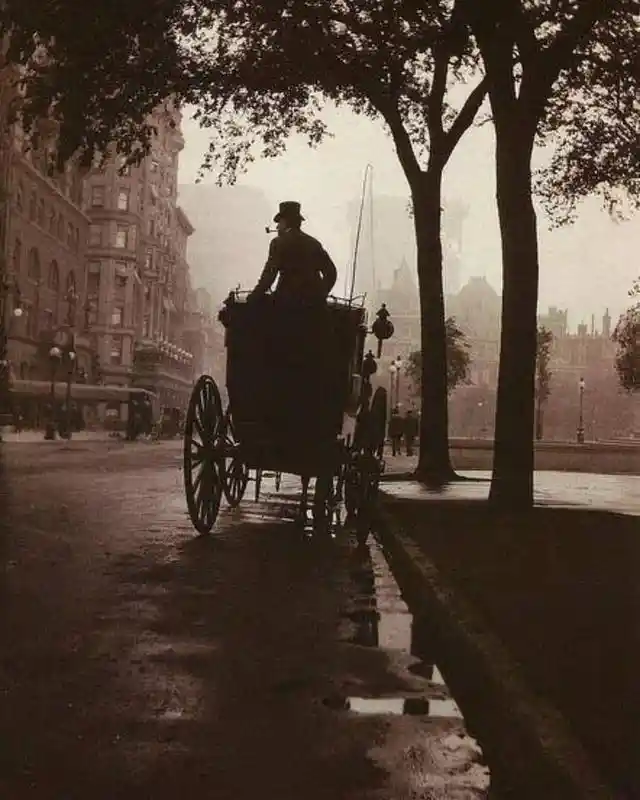
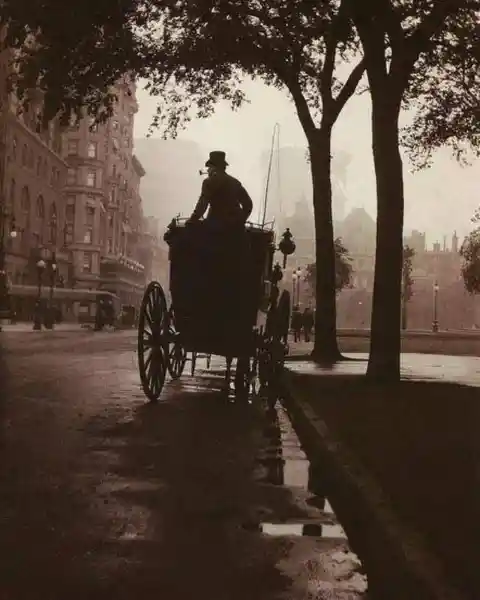
If you wanted to catch a ride in one of these bad boys then you had to pay 30 cents per mile for a single person and 40 cents for two. By the 1920s these carriages were mostly phased out of major operation.
Little girl and her bearded dragon at a pet show at Venice Beach, California in 1936.
Pet shows were an easy and inexpensive way to spend a day during the Great Depression. At the time no one had any money so there really wasn’t a chance for anyone to do anything. However, if you had kids you couldn’t just let them run around like goblins and one of the easiest ways to keep them occupied was to have them show off their pets.
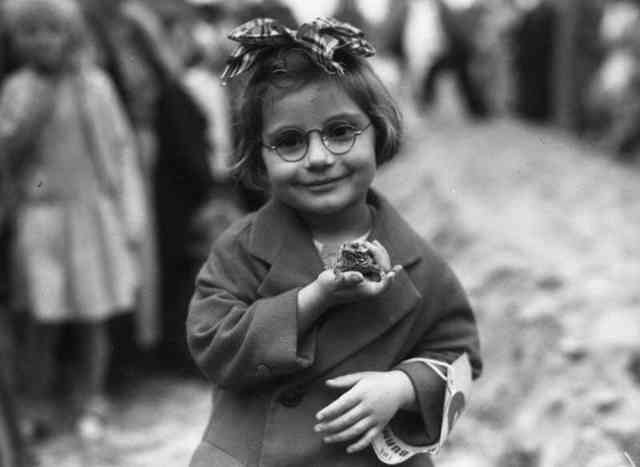

We don’t know if this young lady won an award for her bearded dragon or not, but if we were handing out awards she would definitely get a trophy for coolest pet. While everyone else was lining up with a dog or a cat, she’s rocking a bearded lizard. Go home, everyone else, you’ve been upstaged.